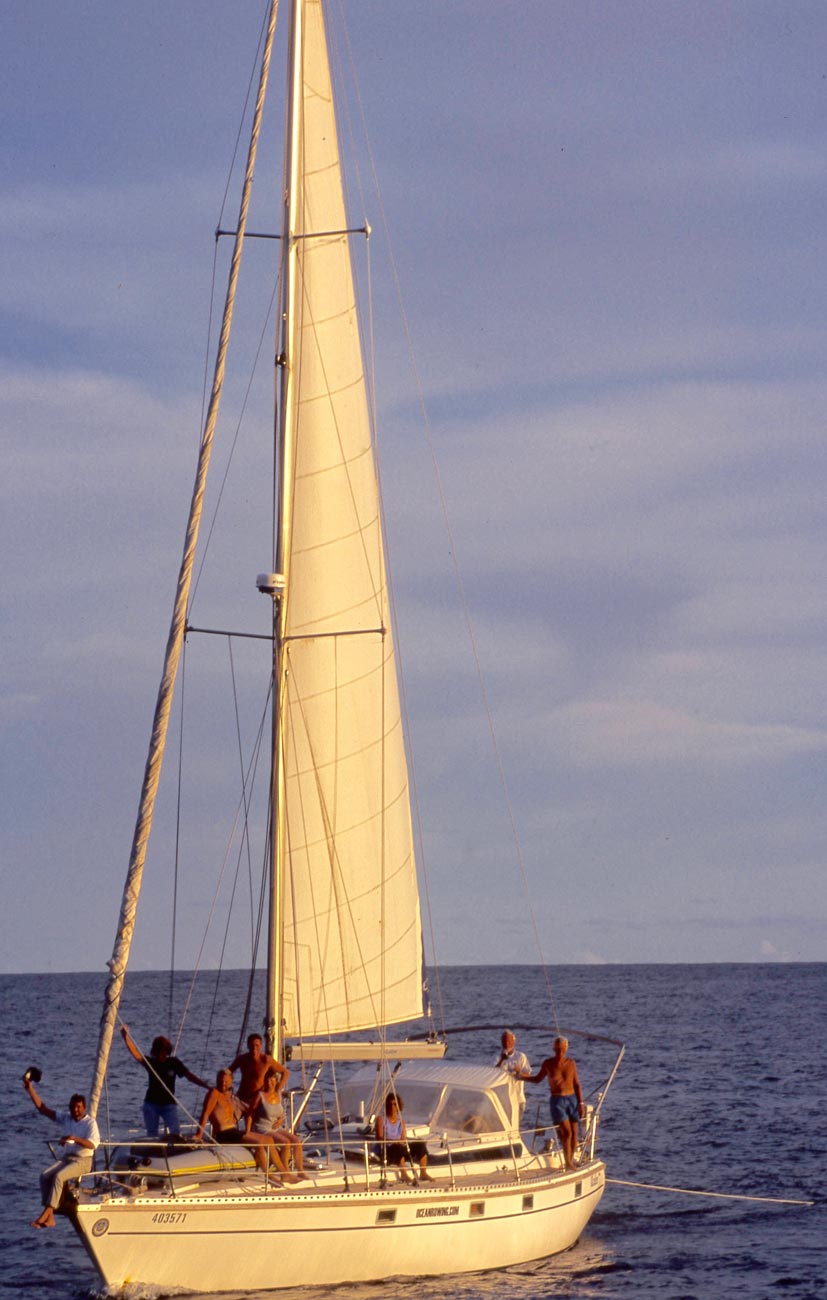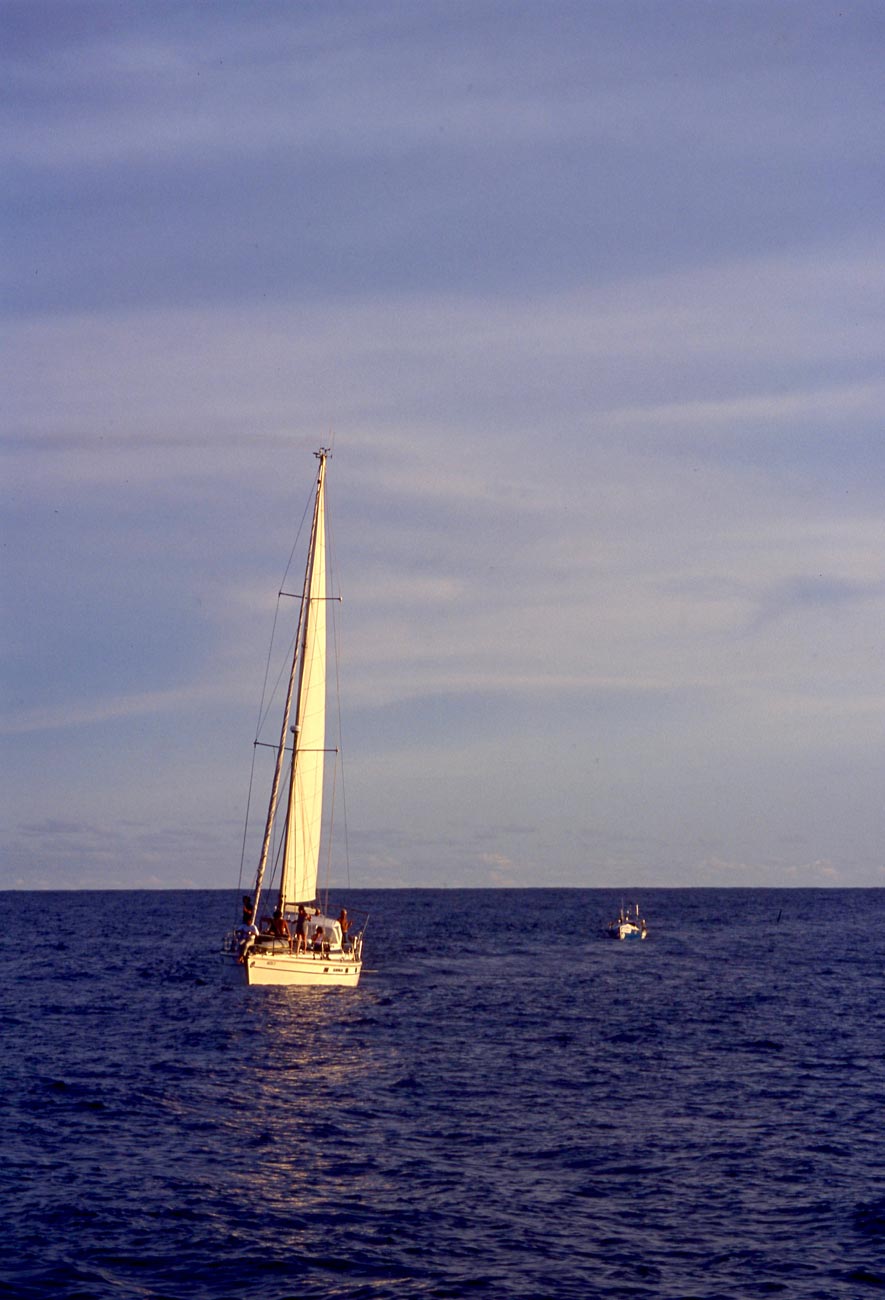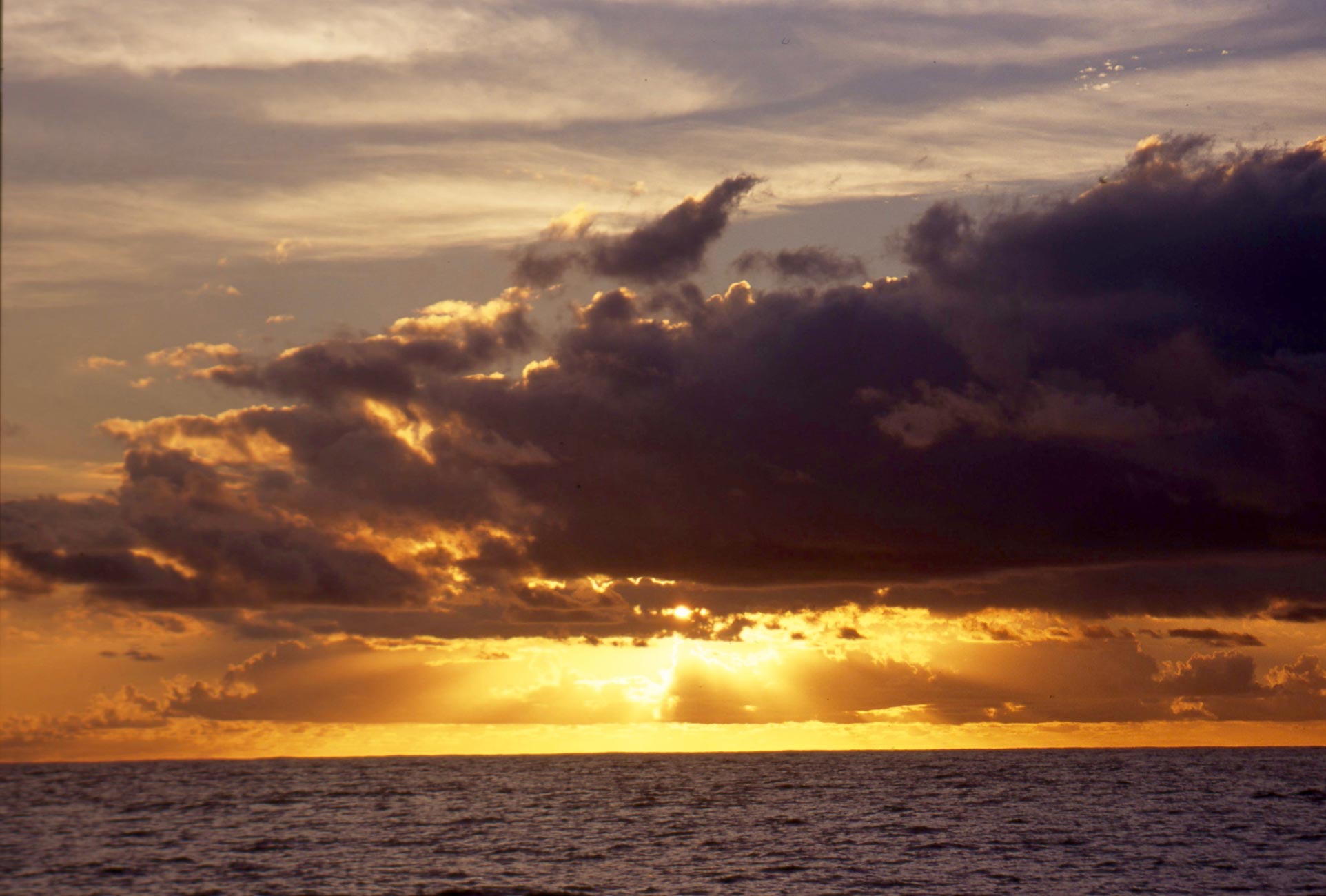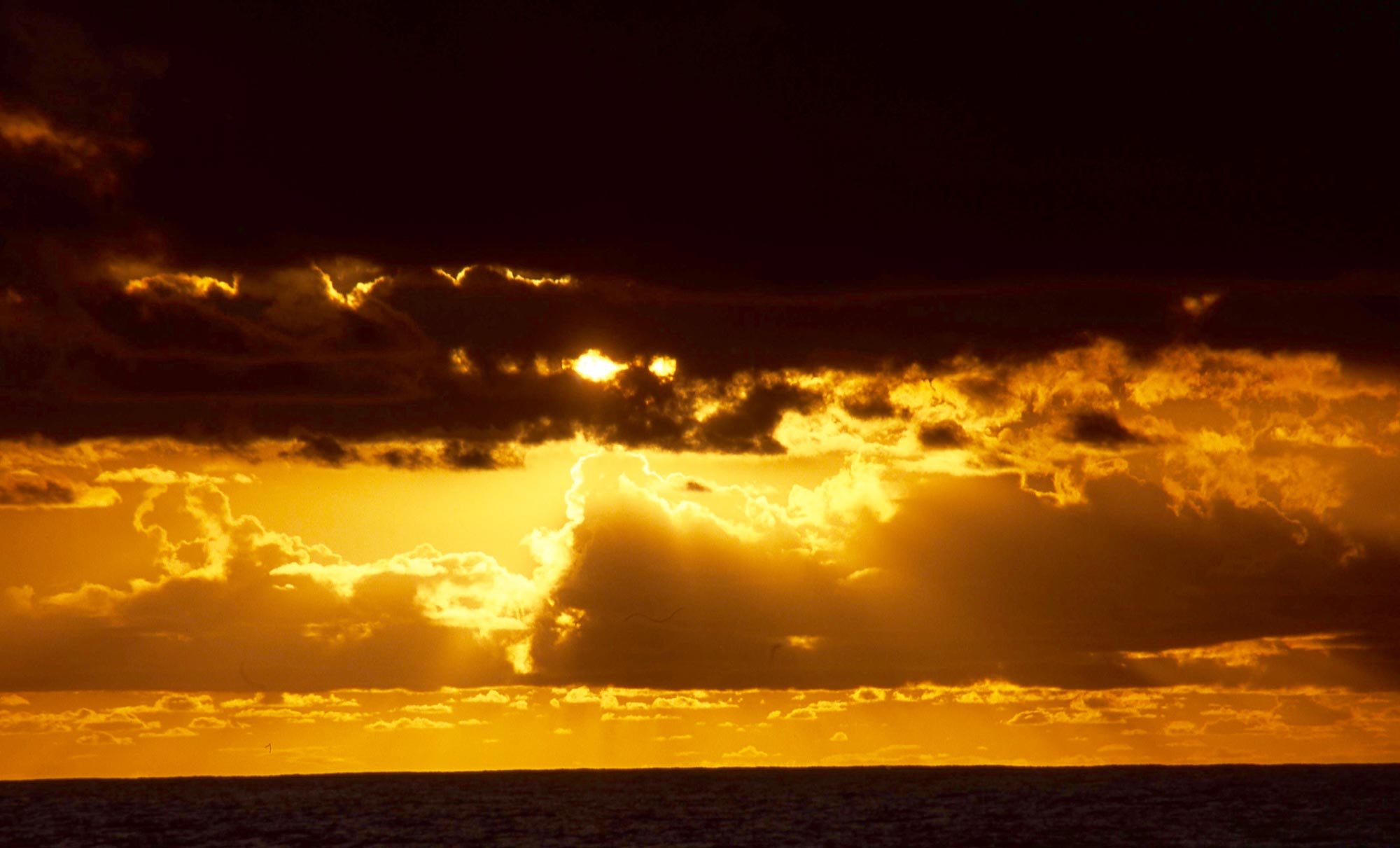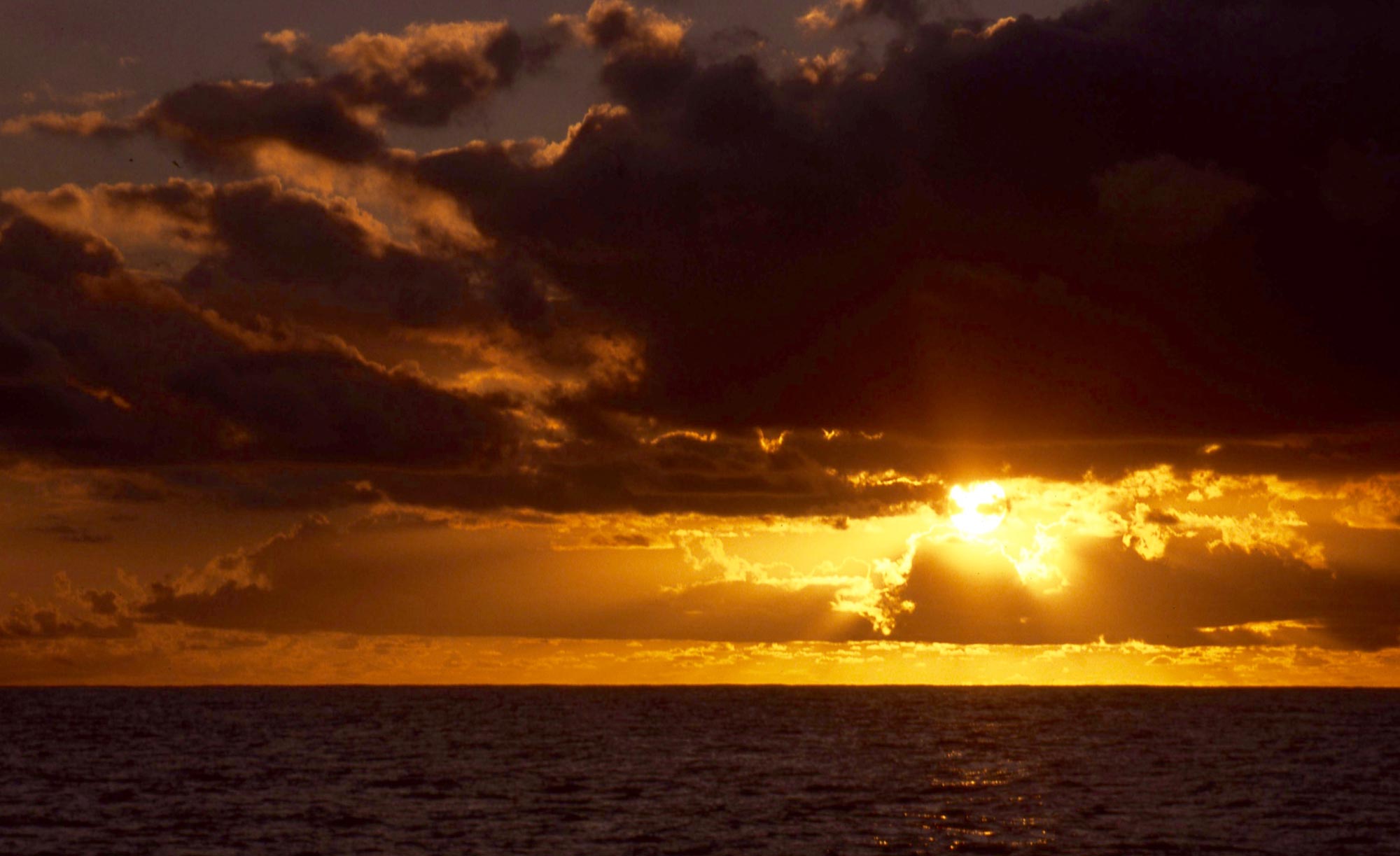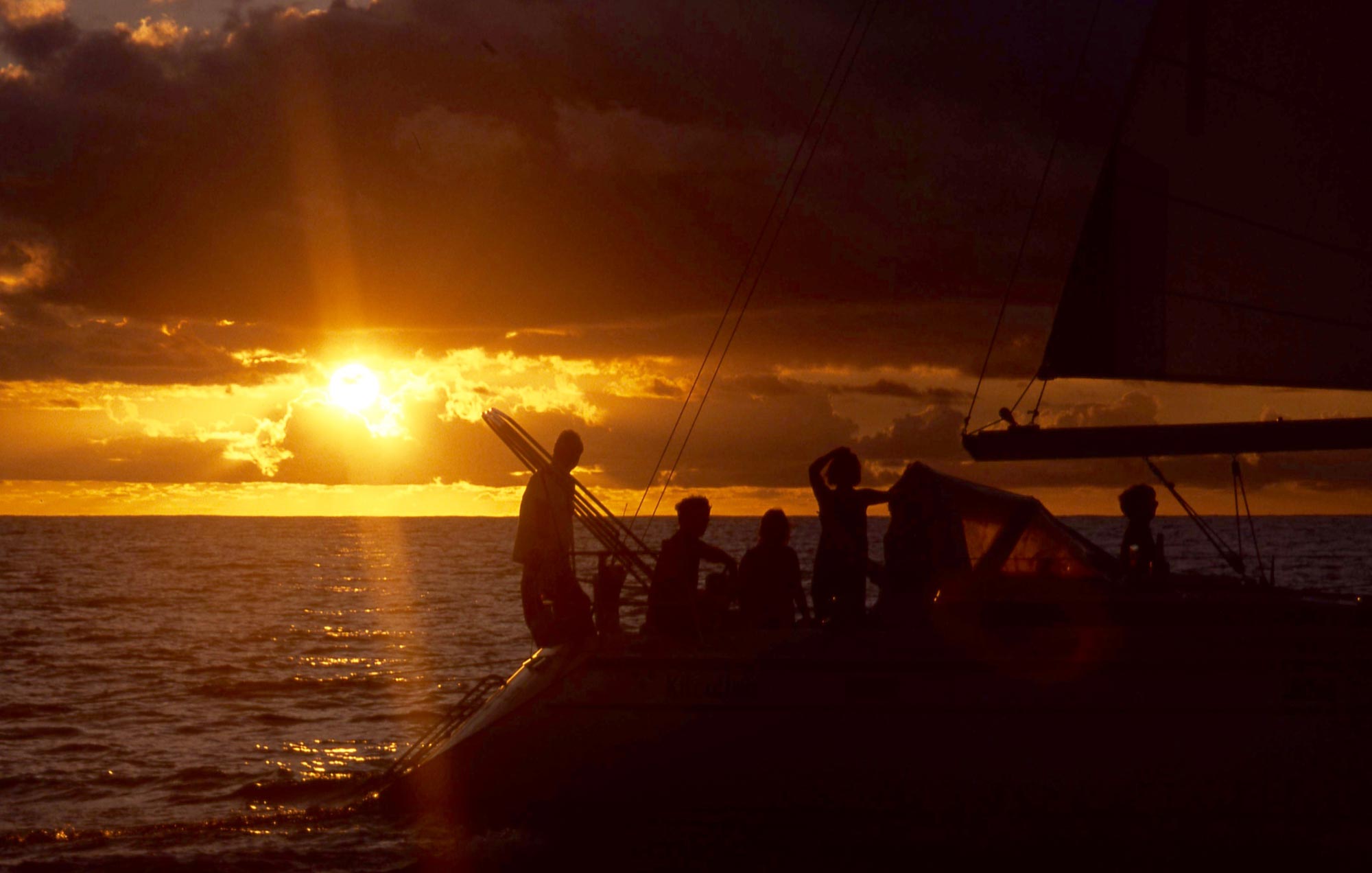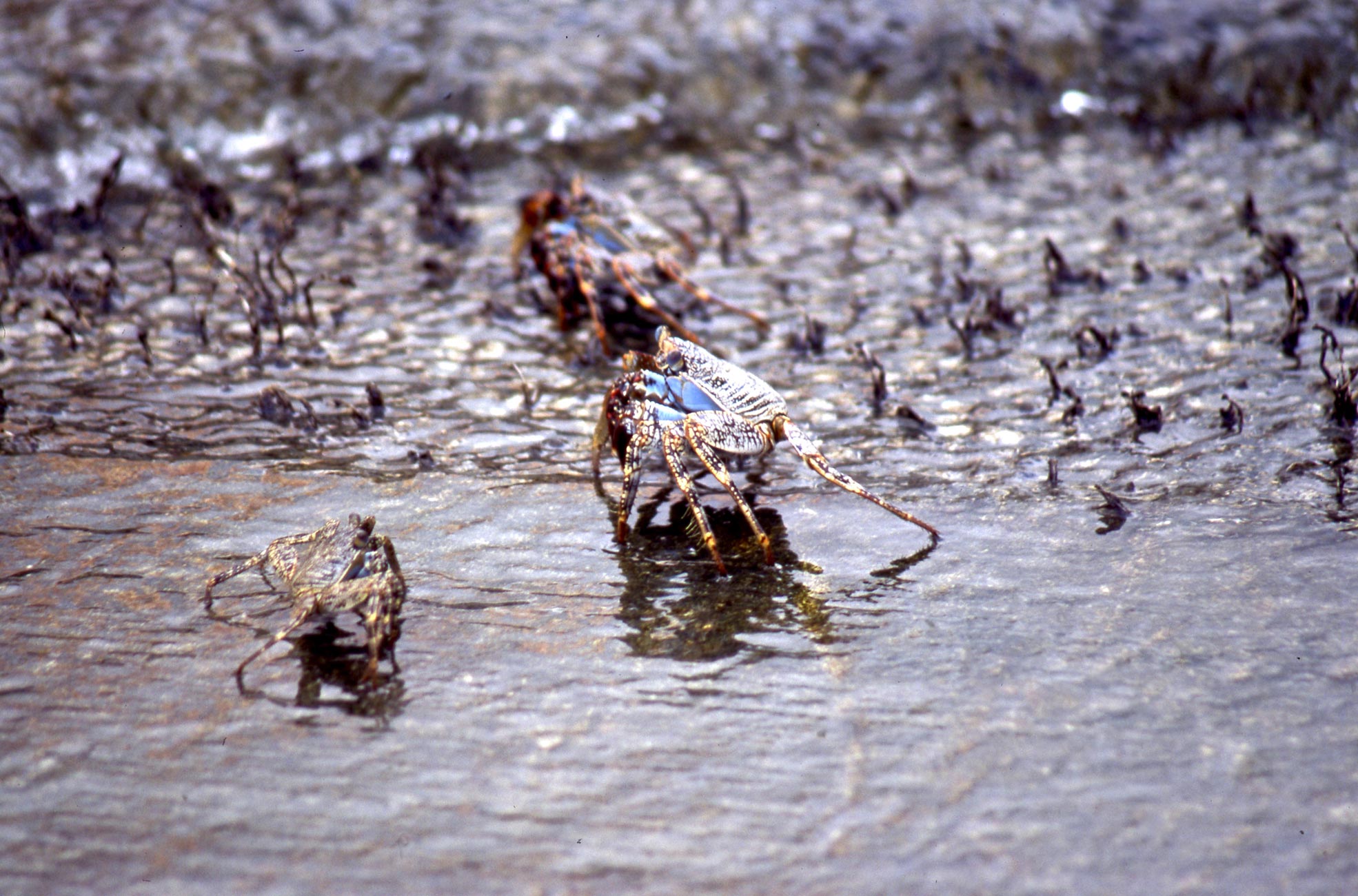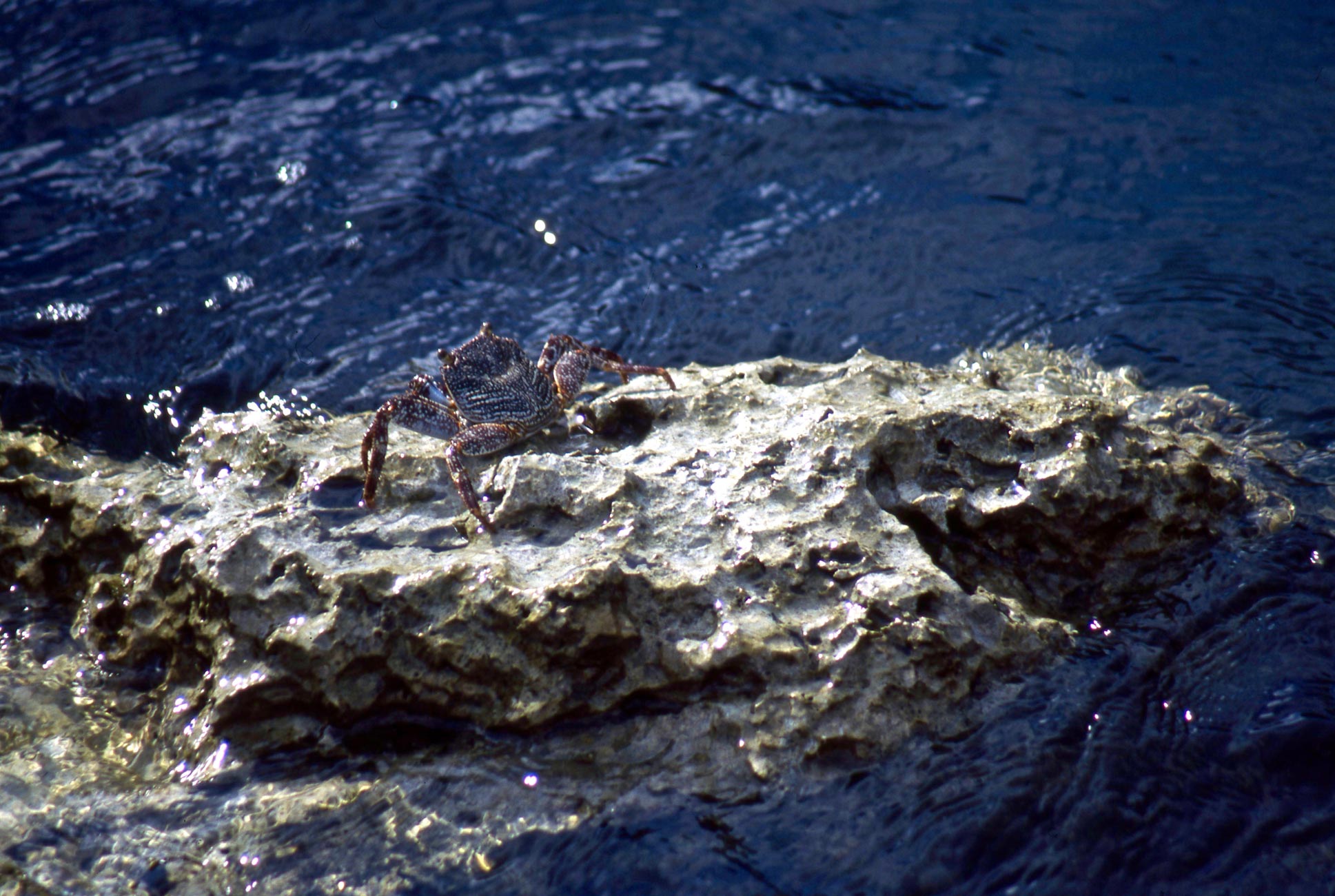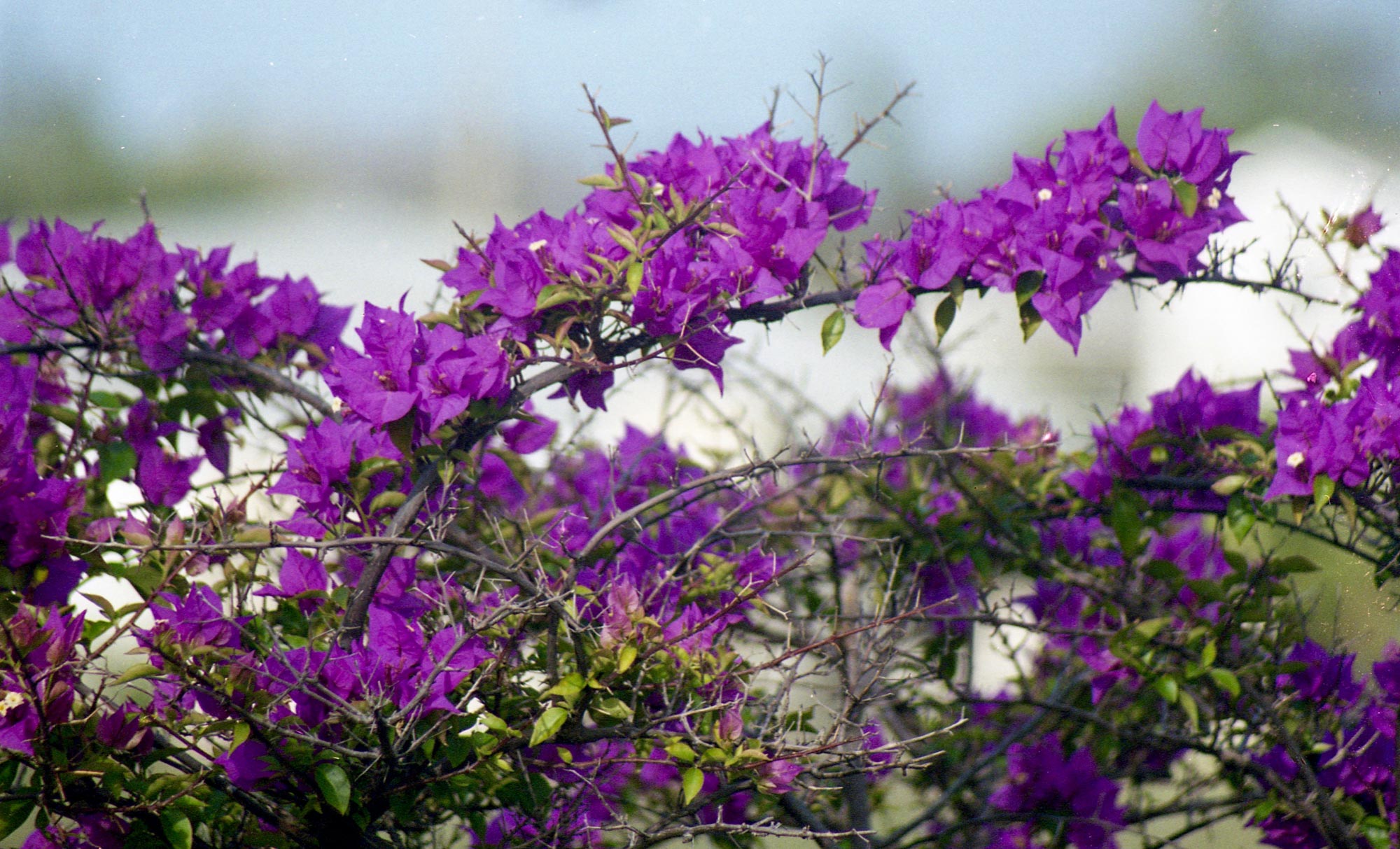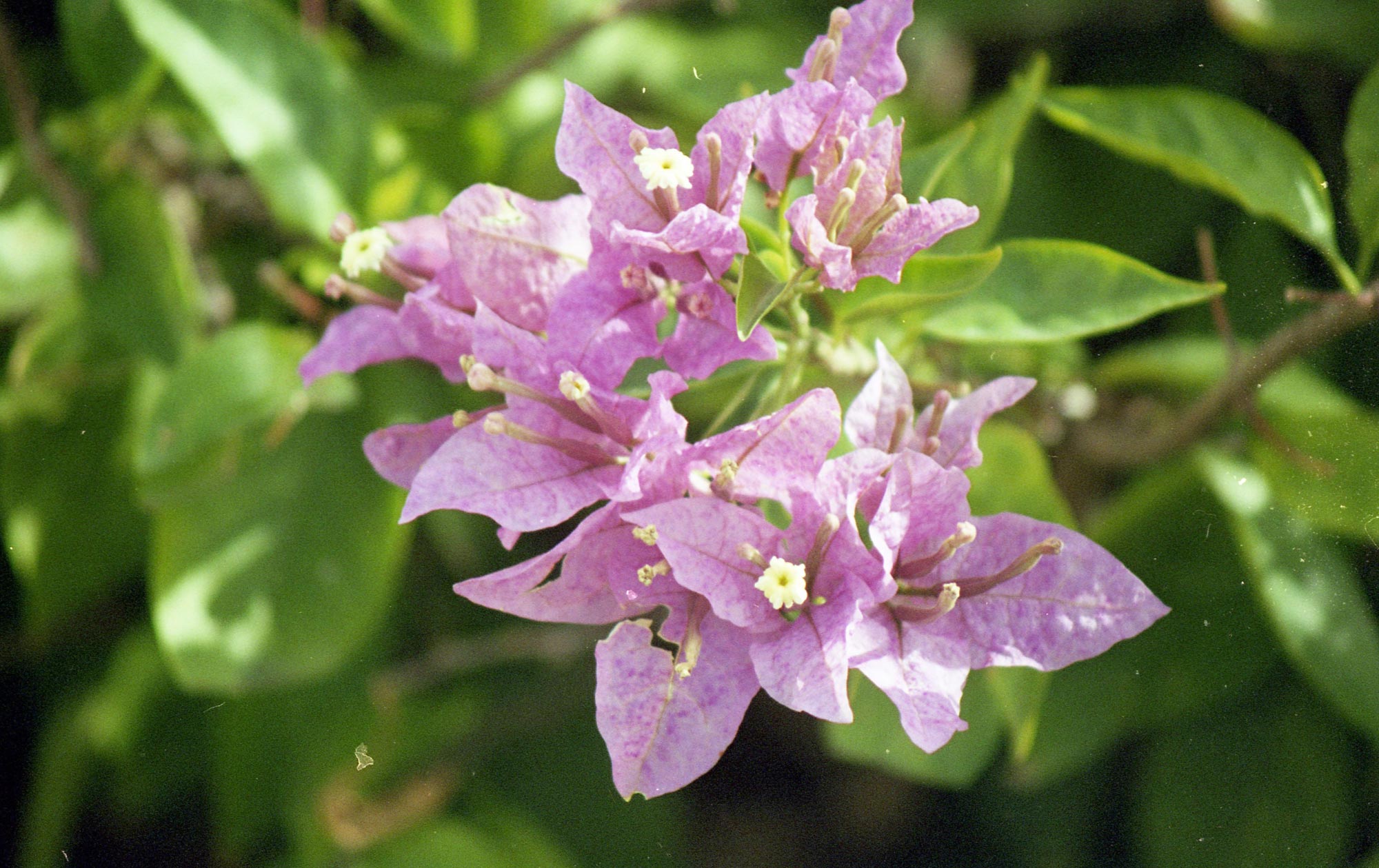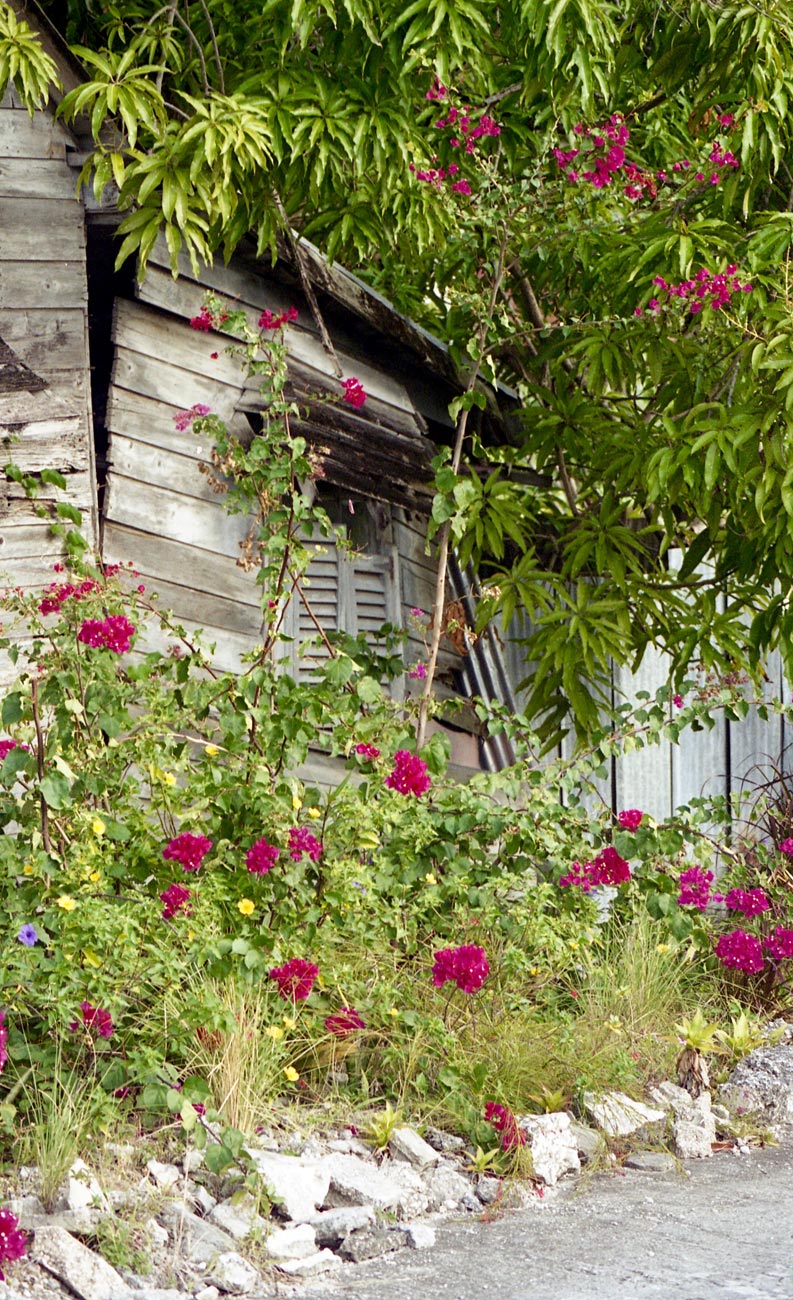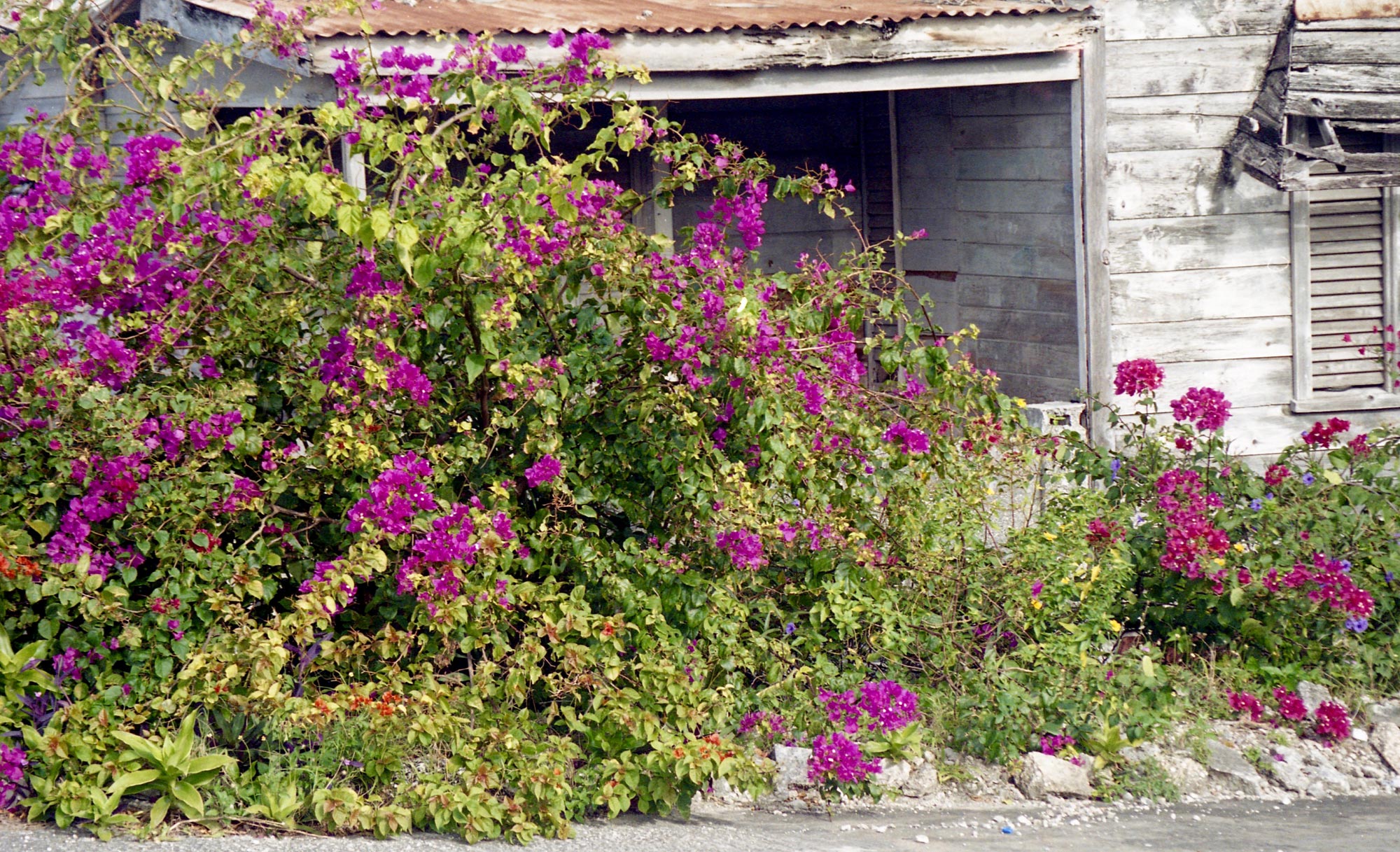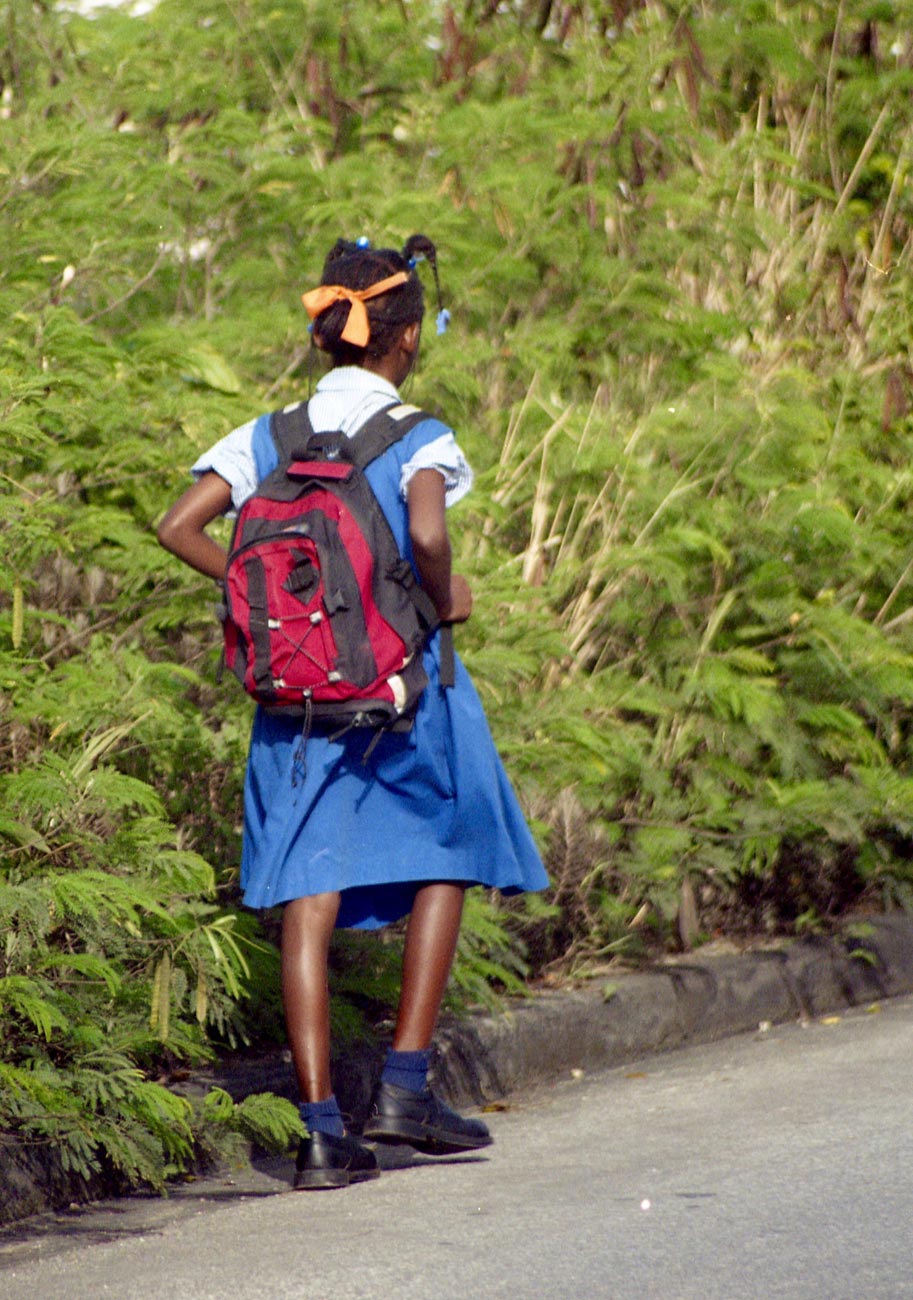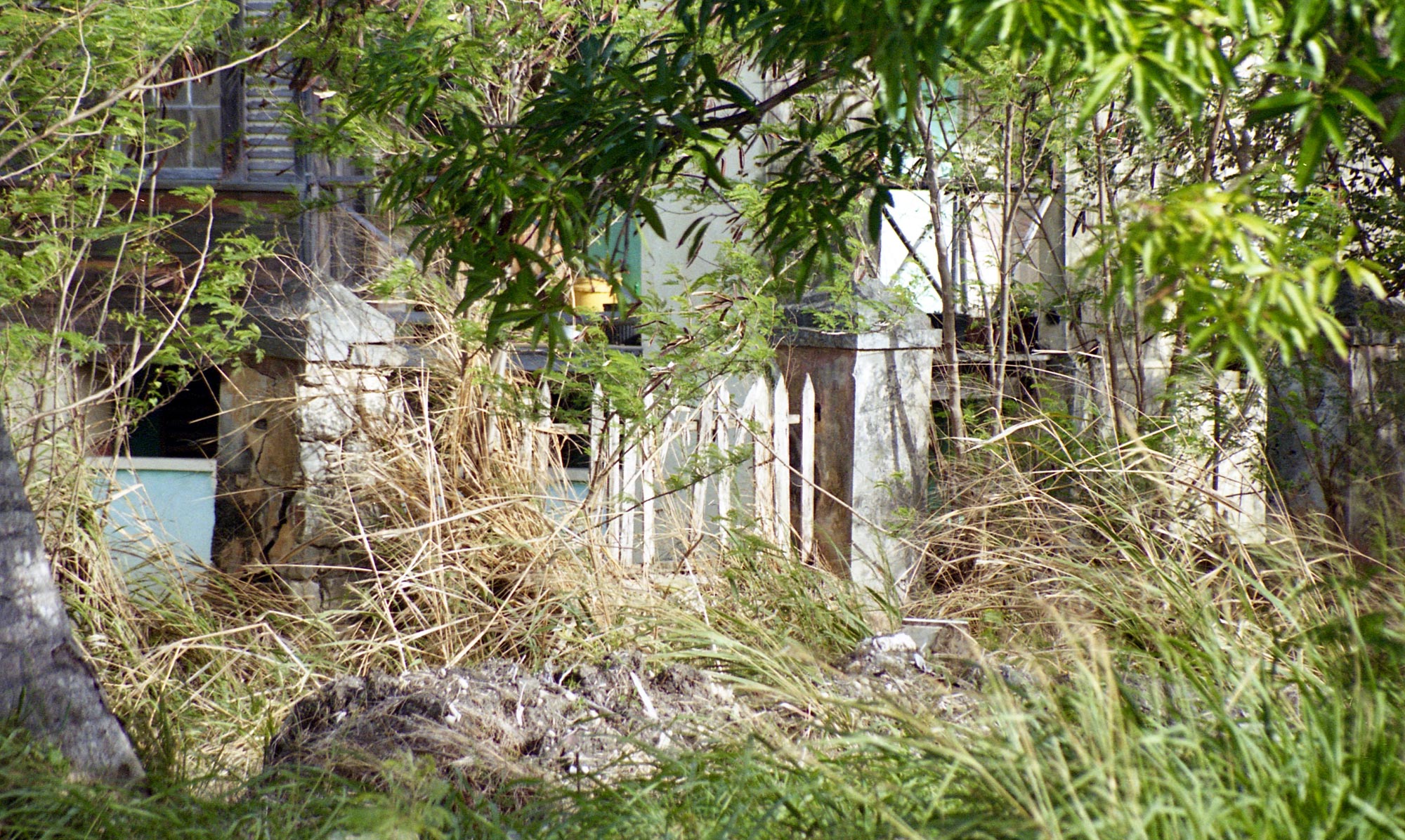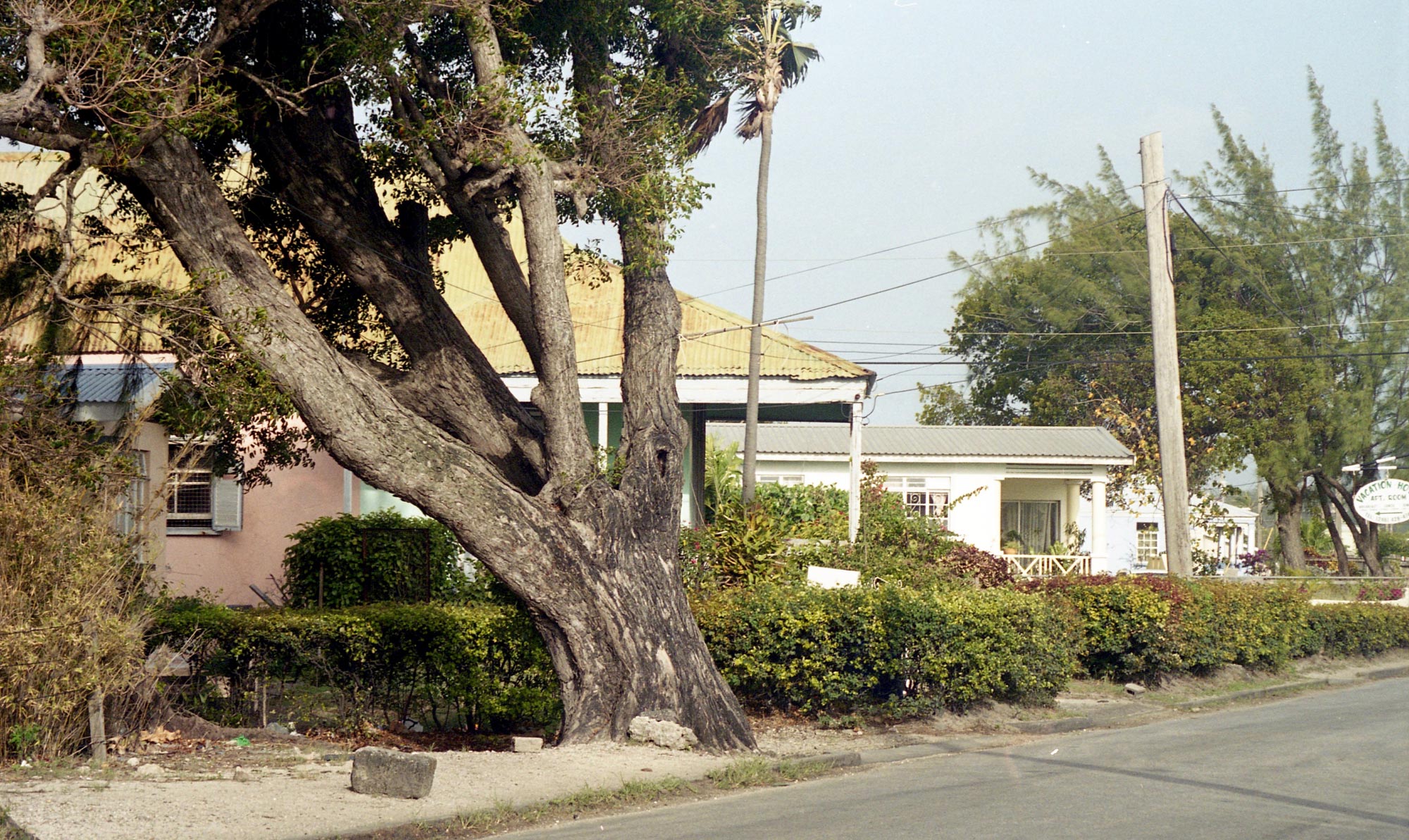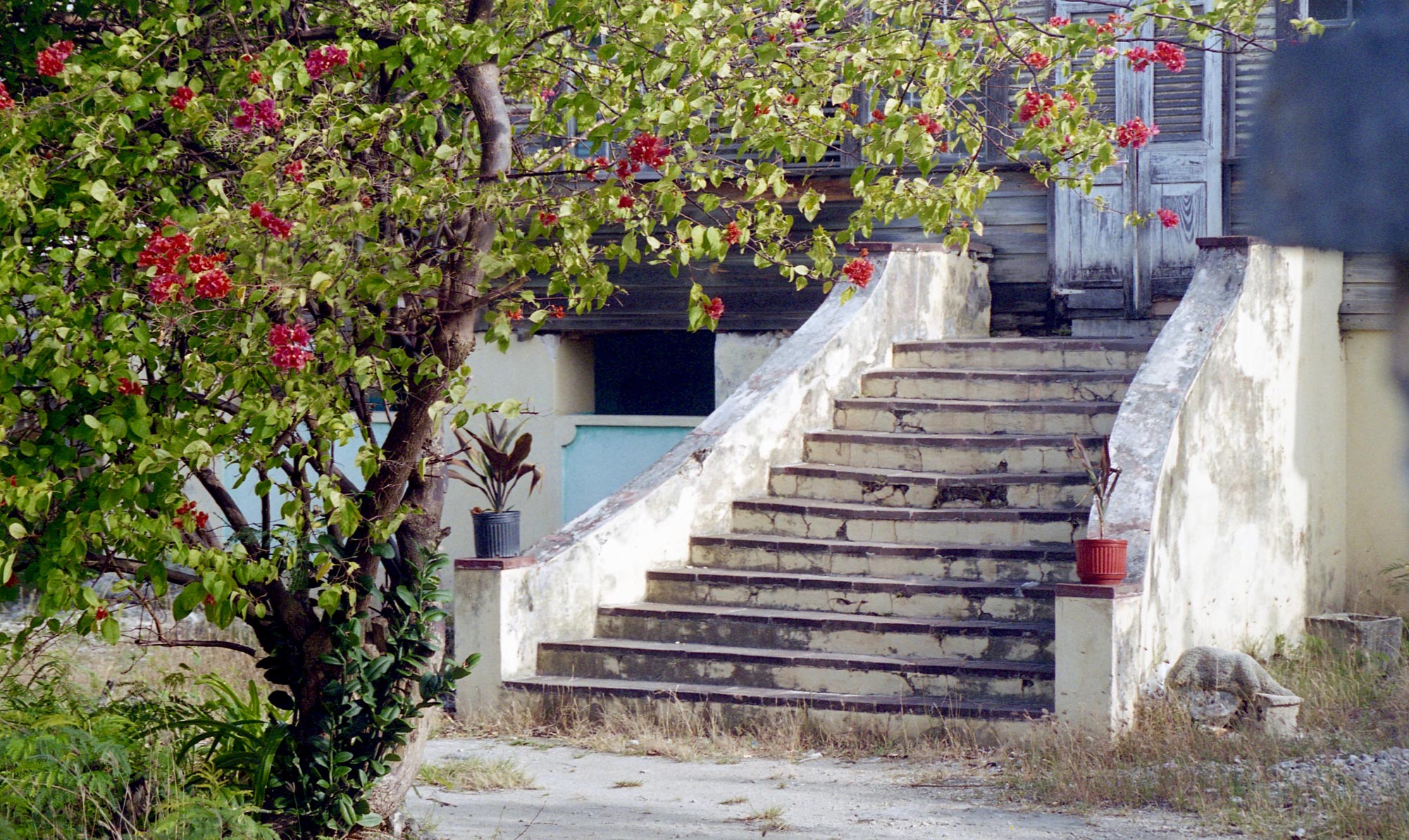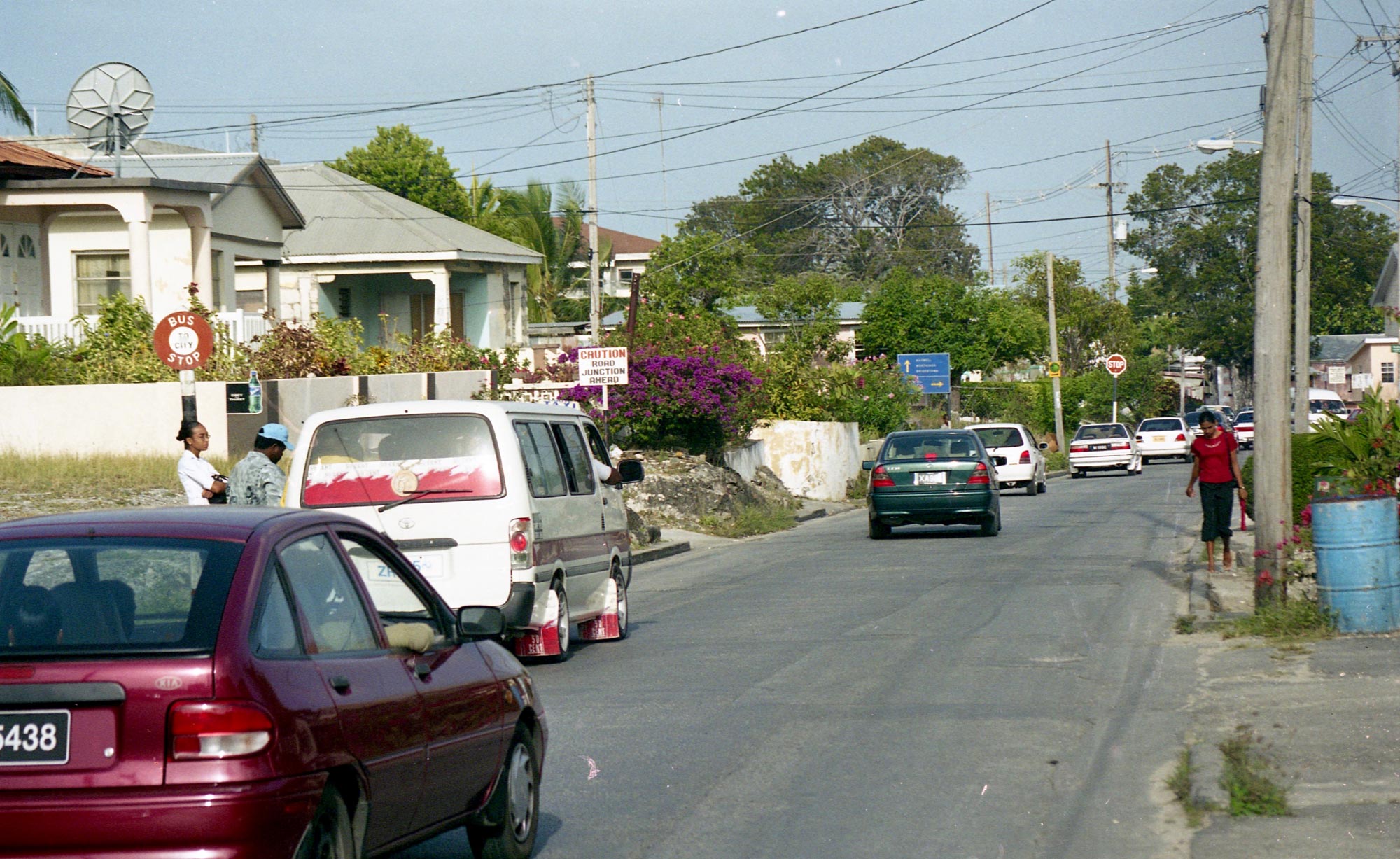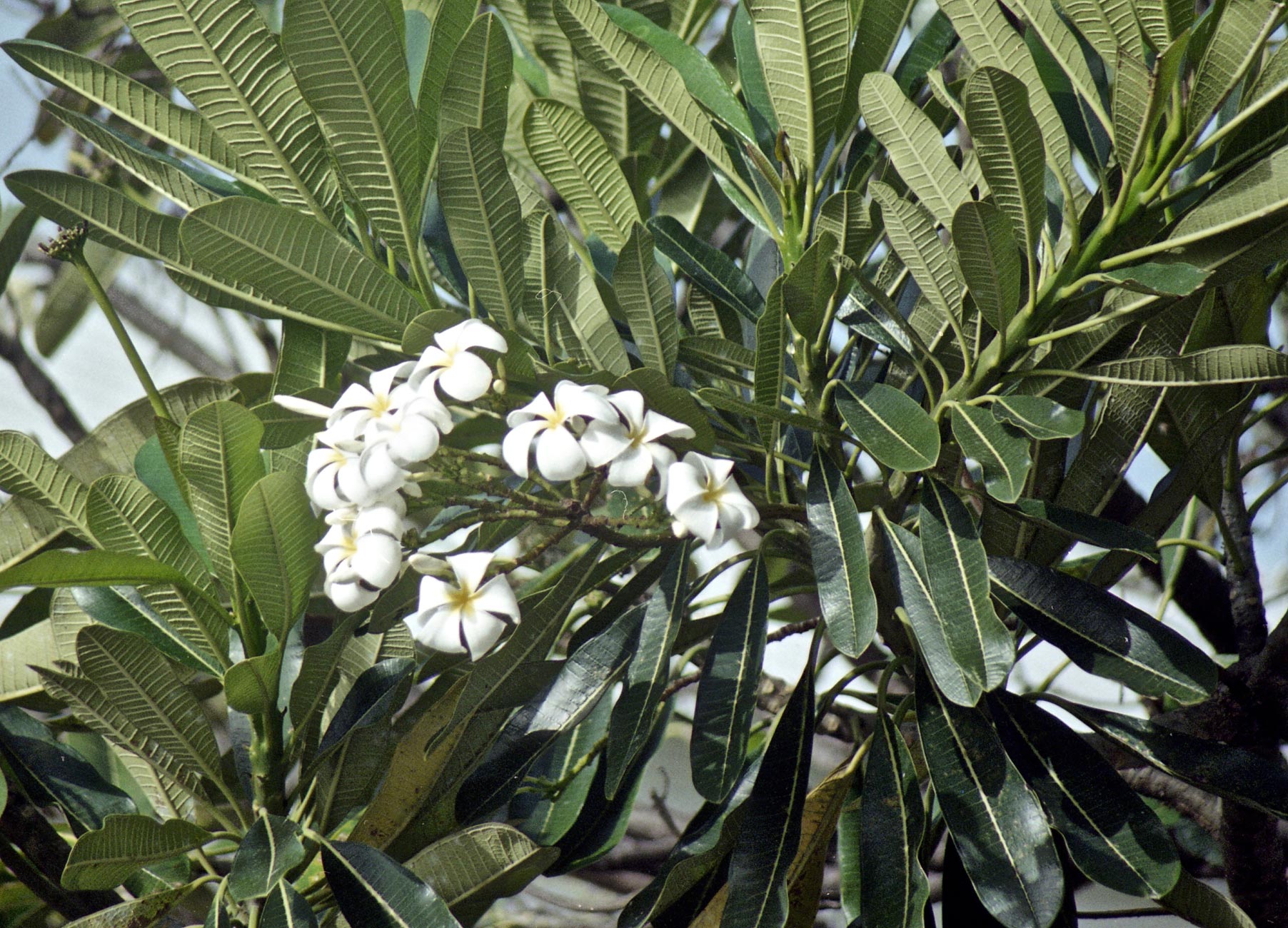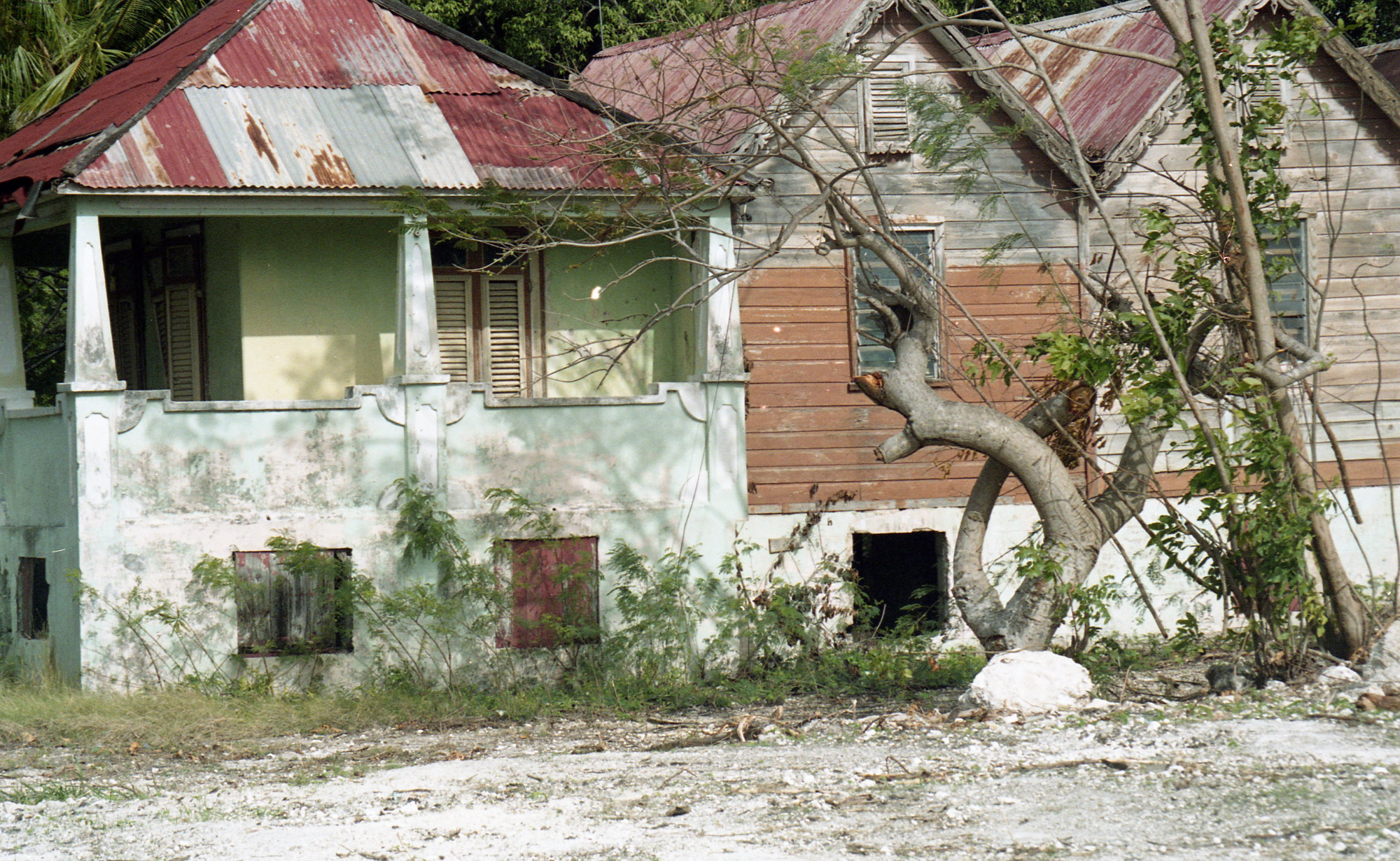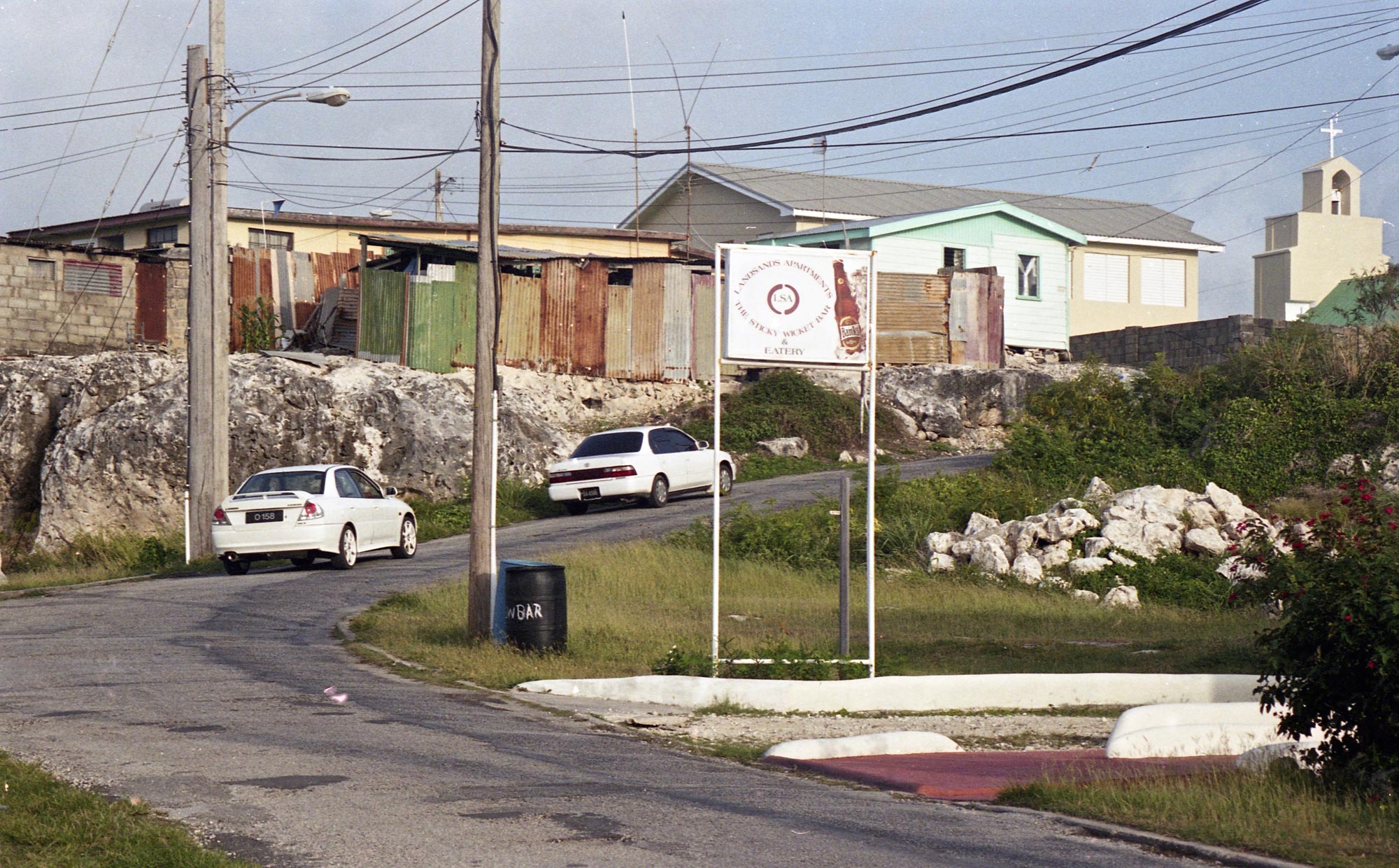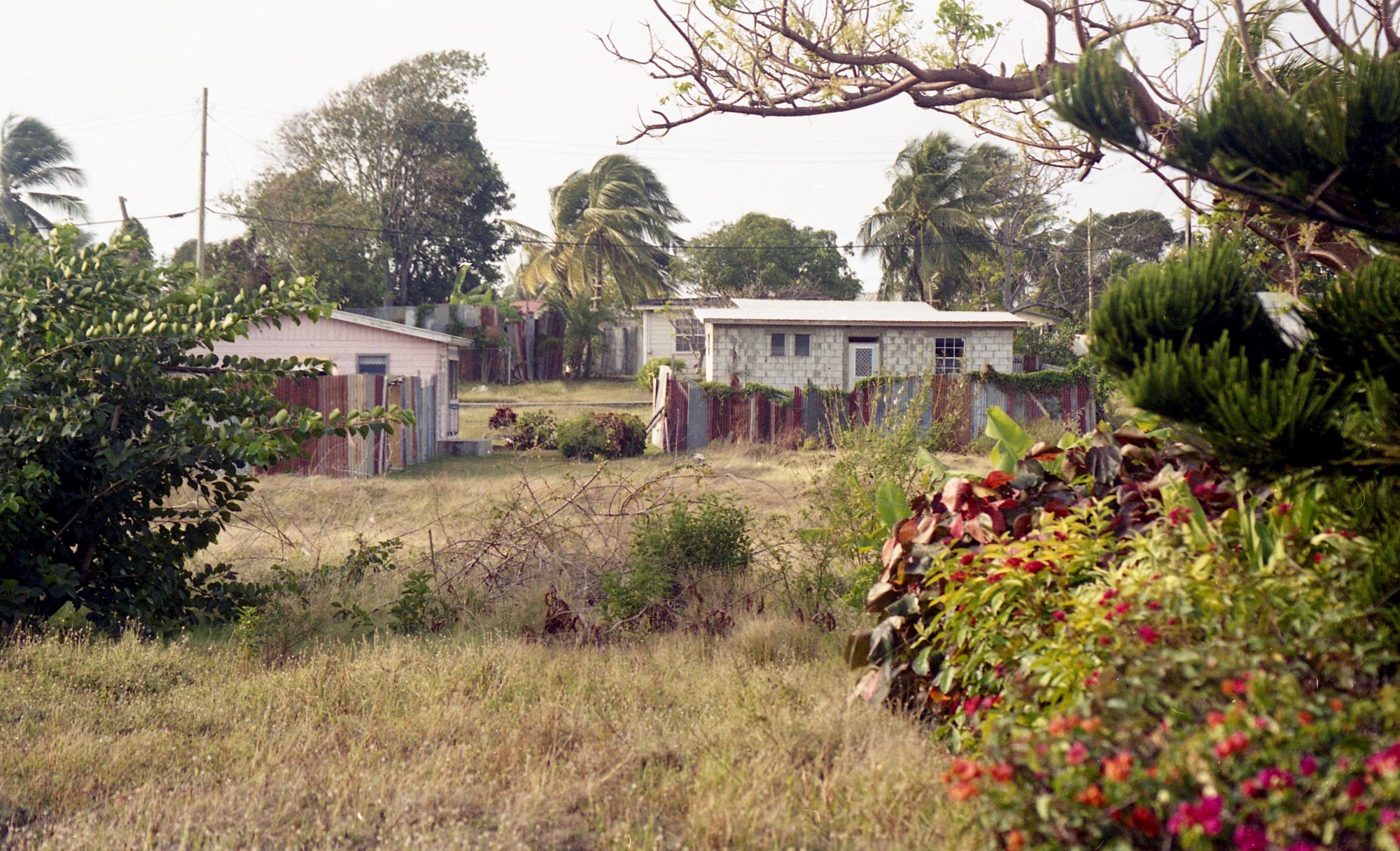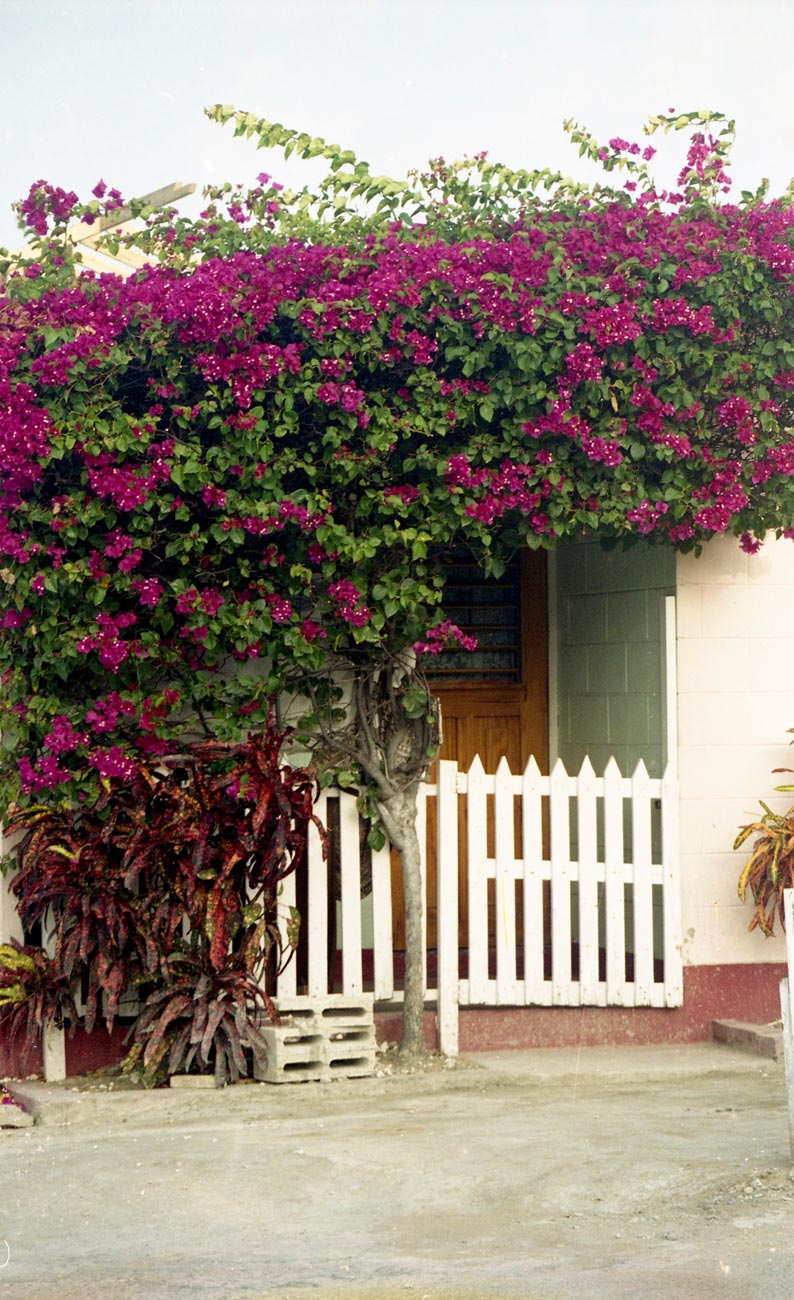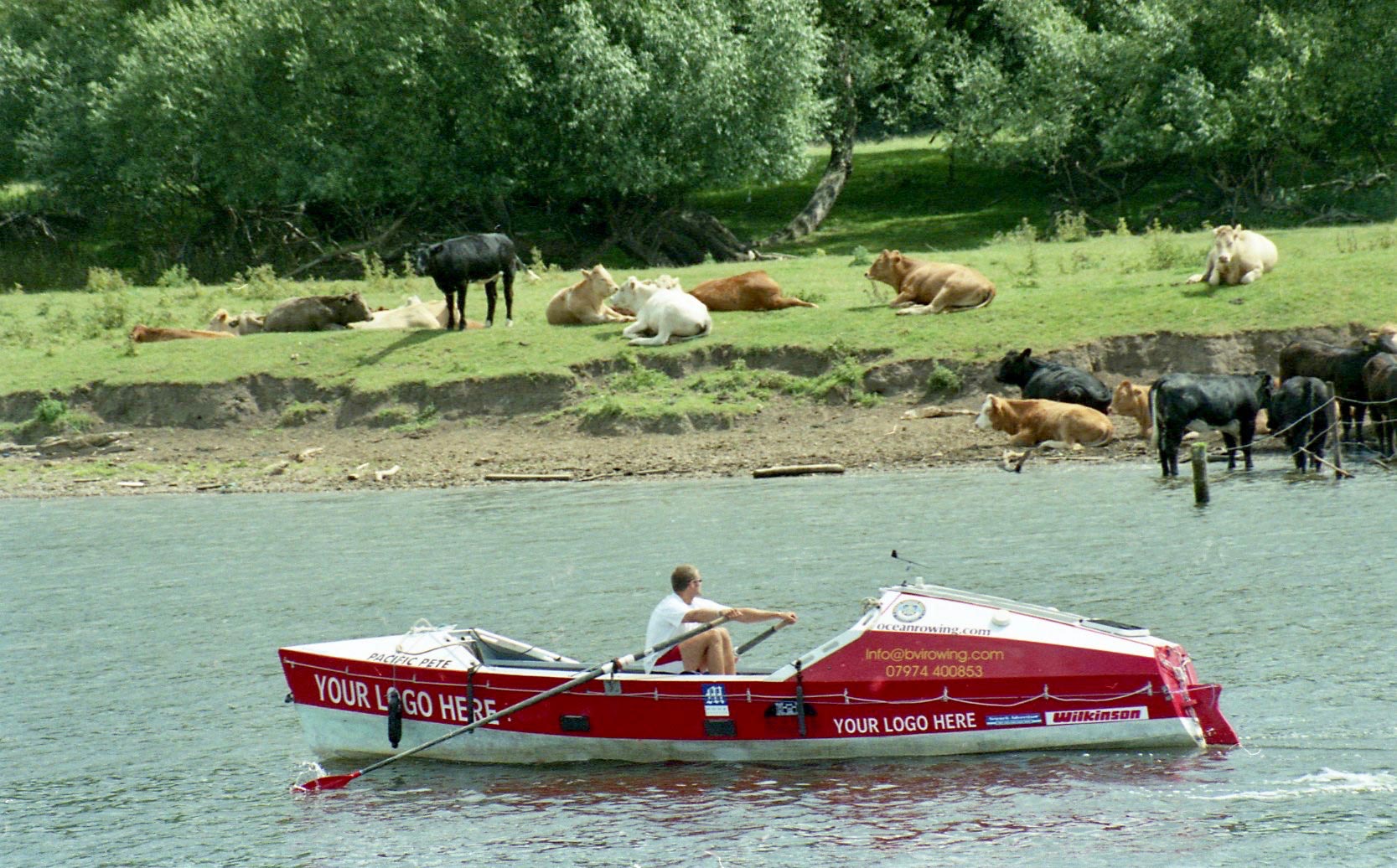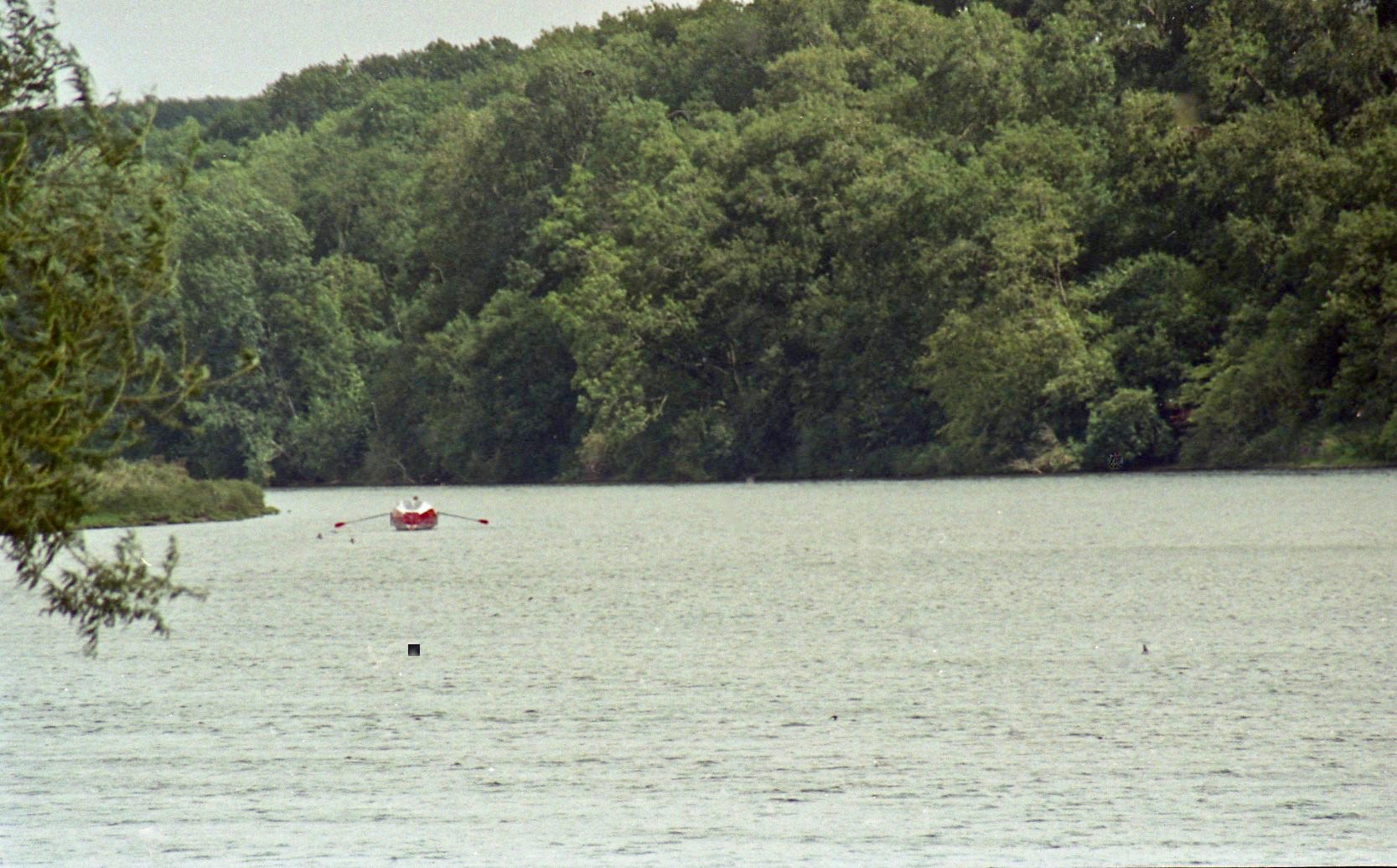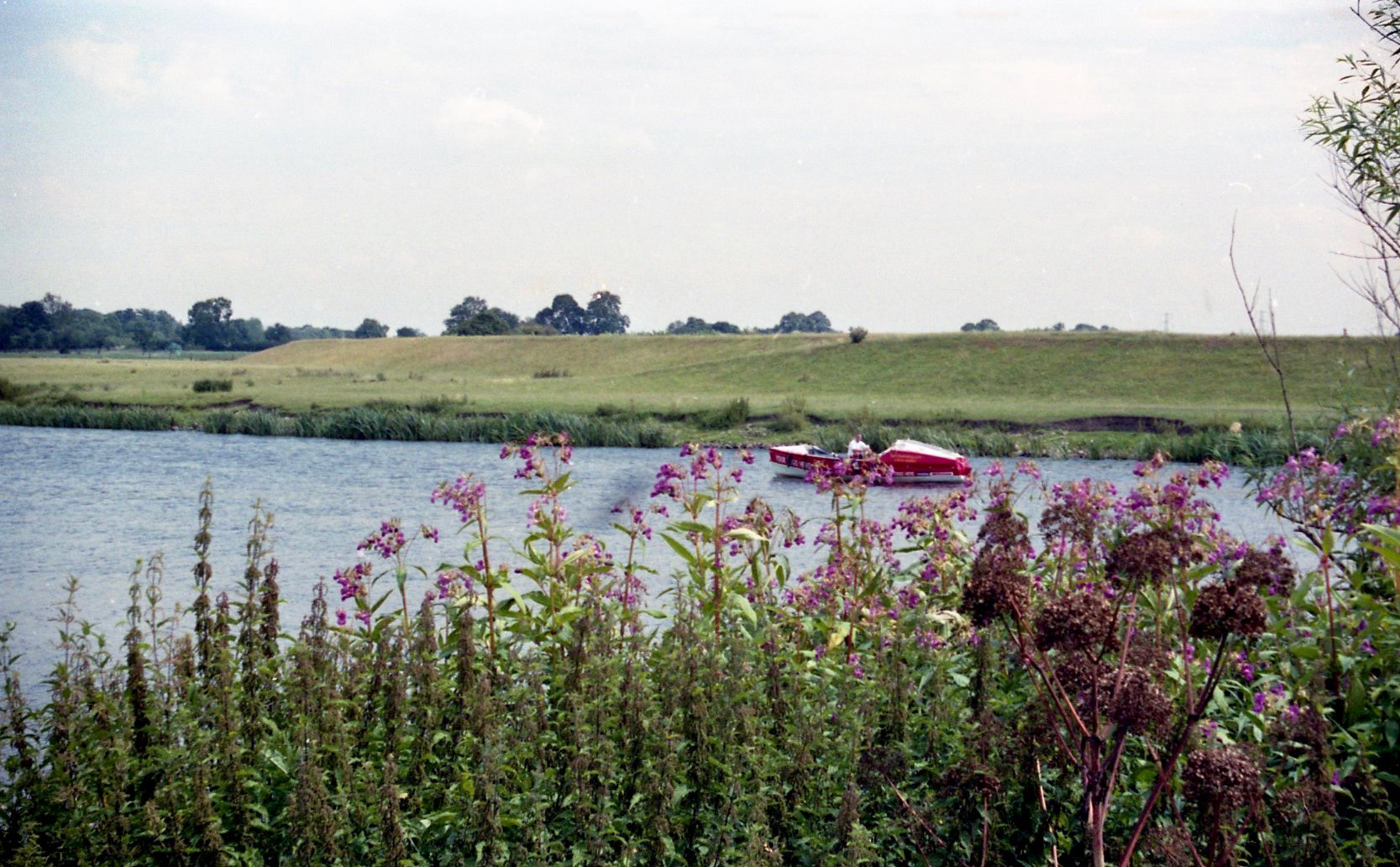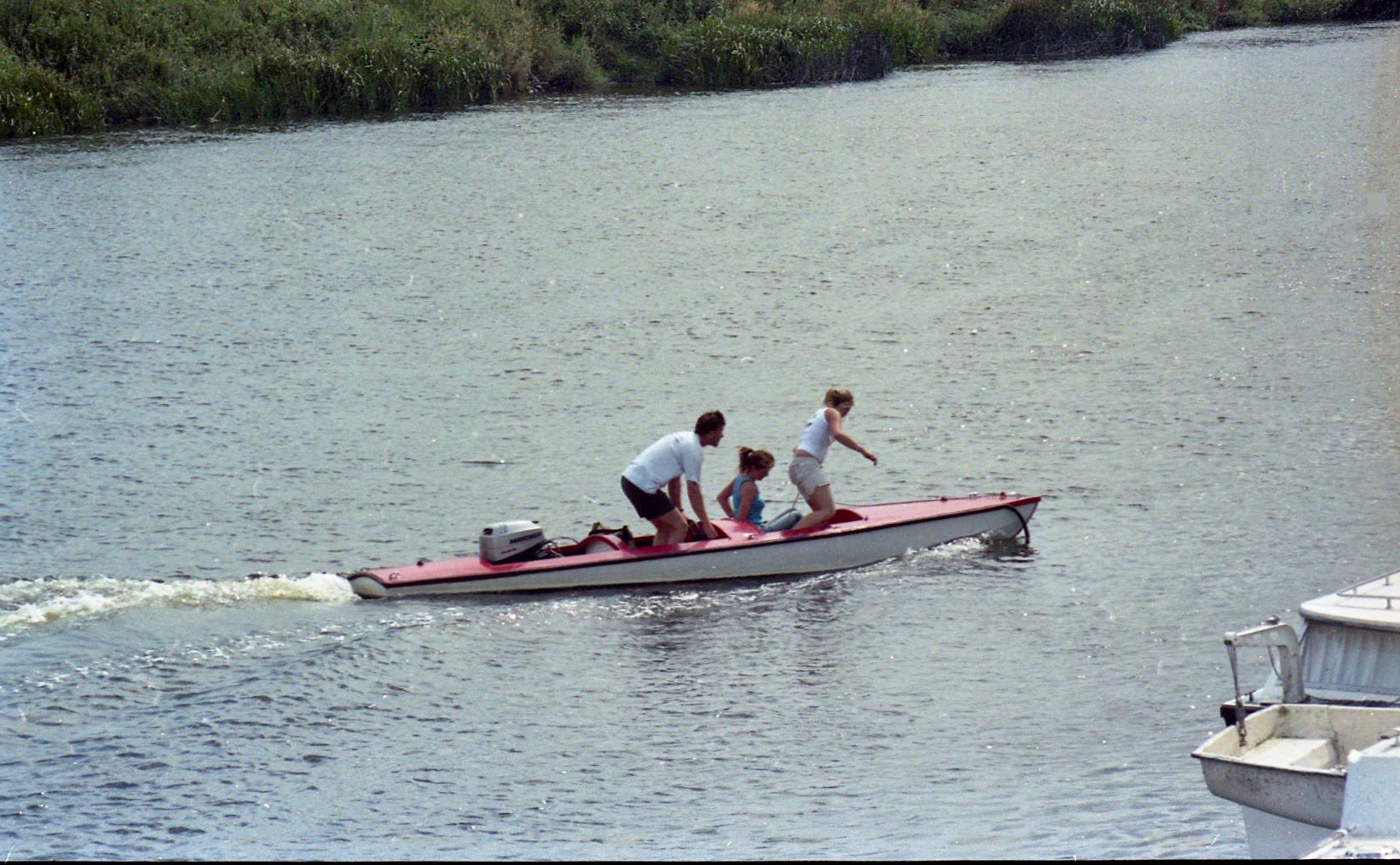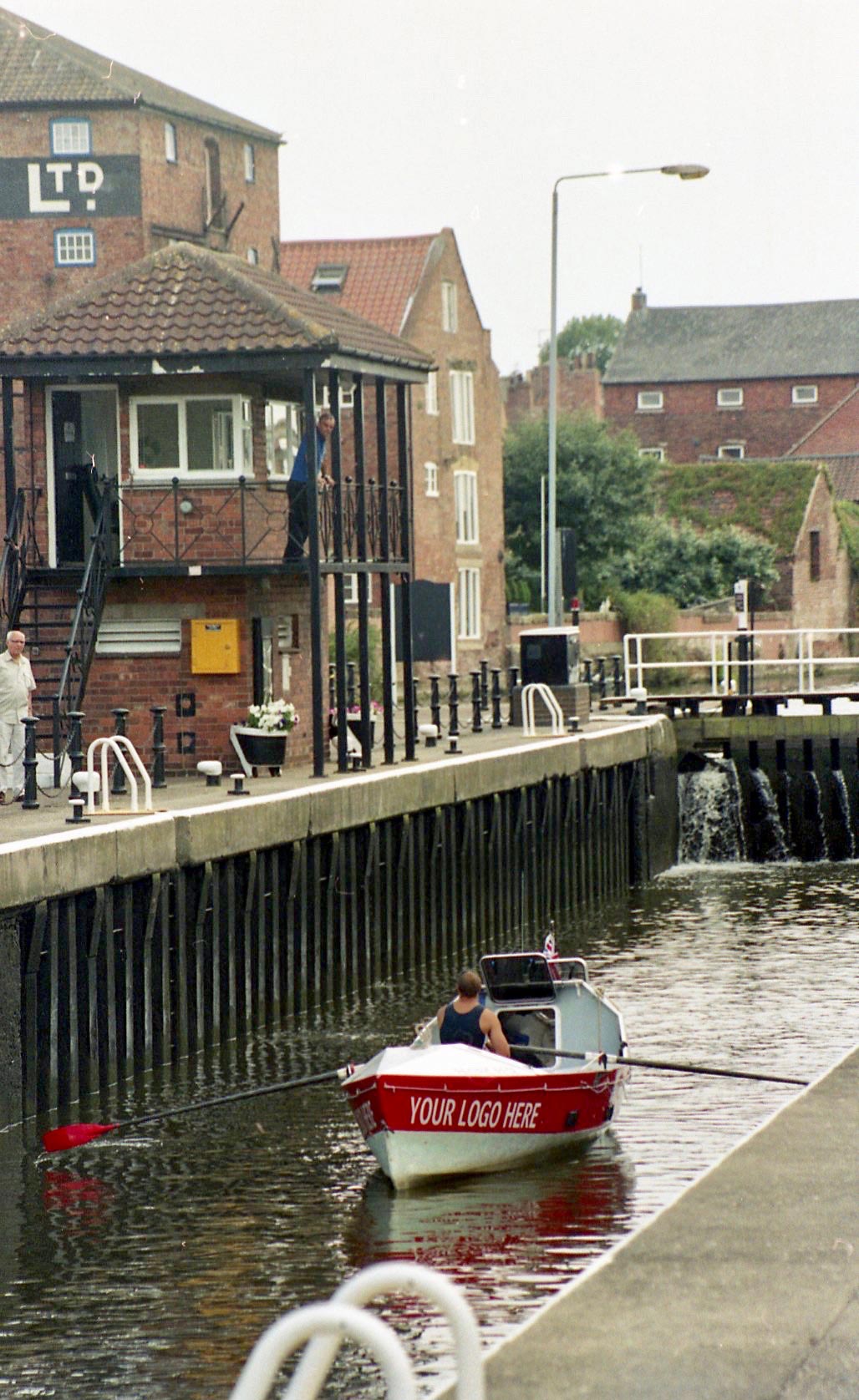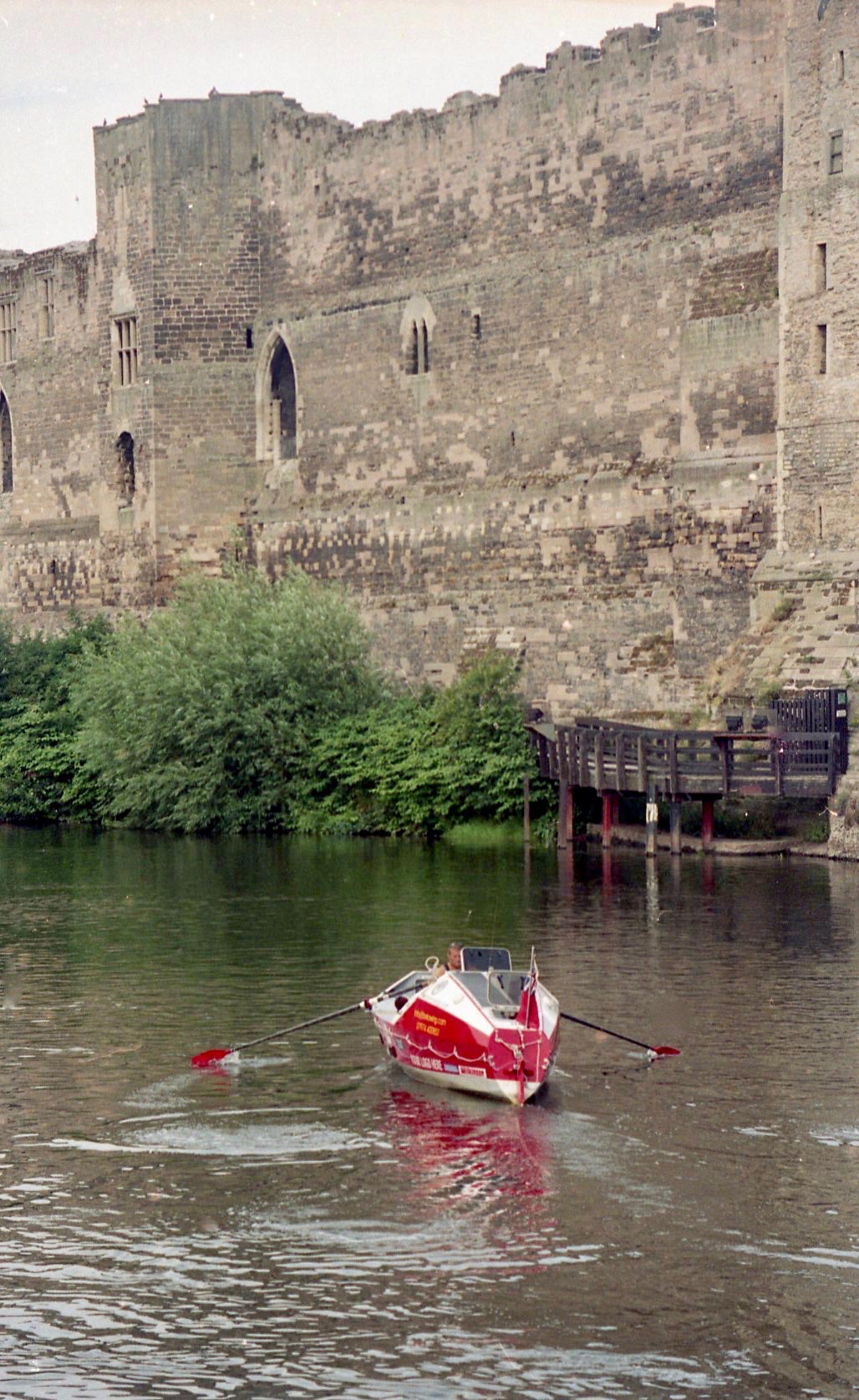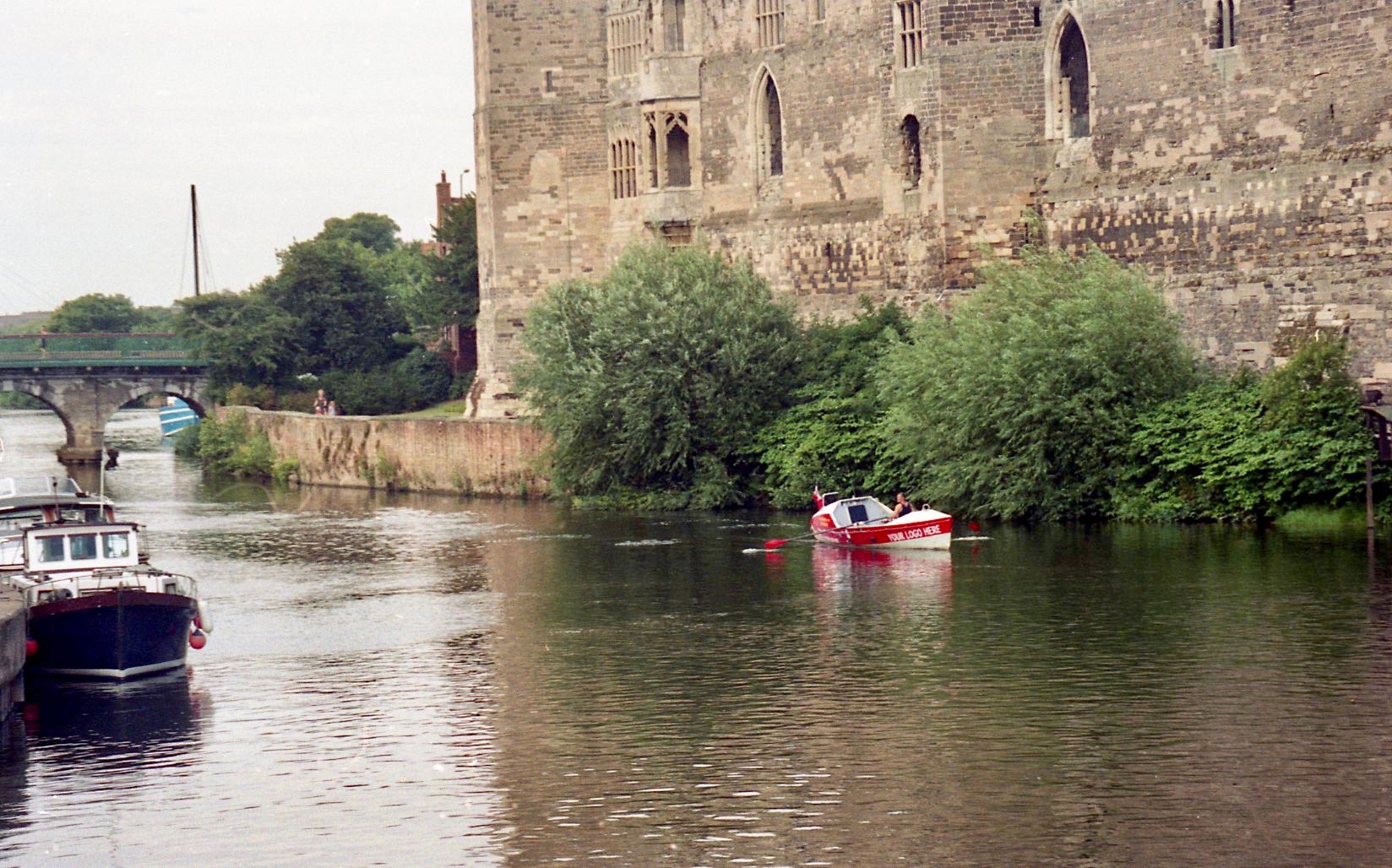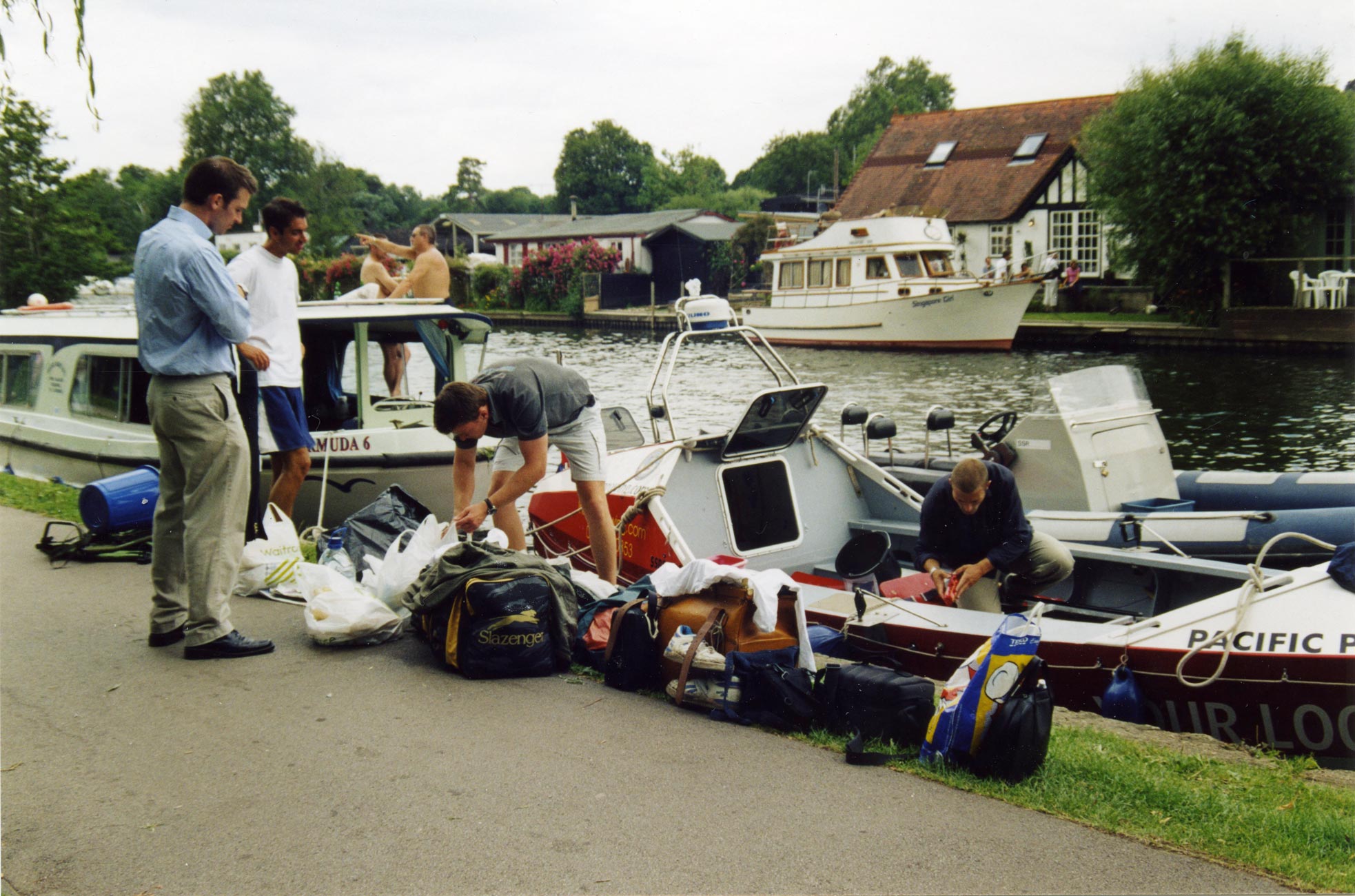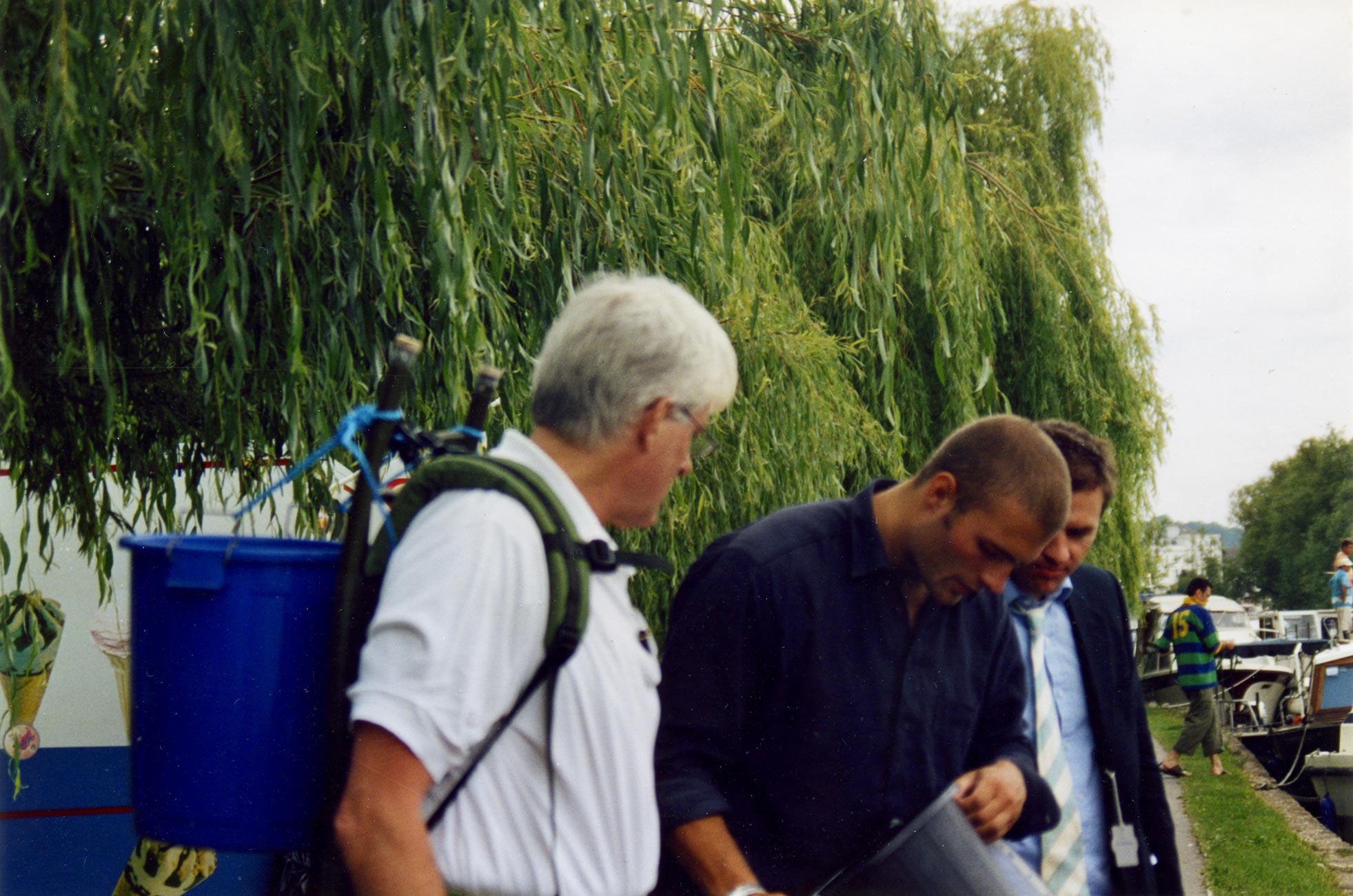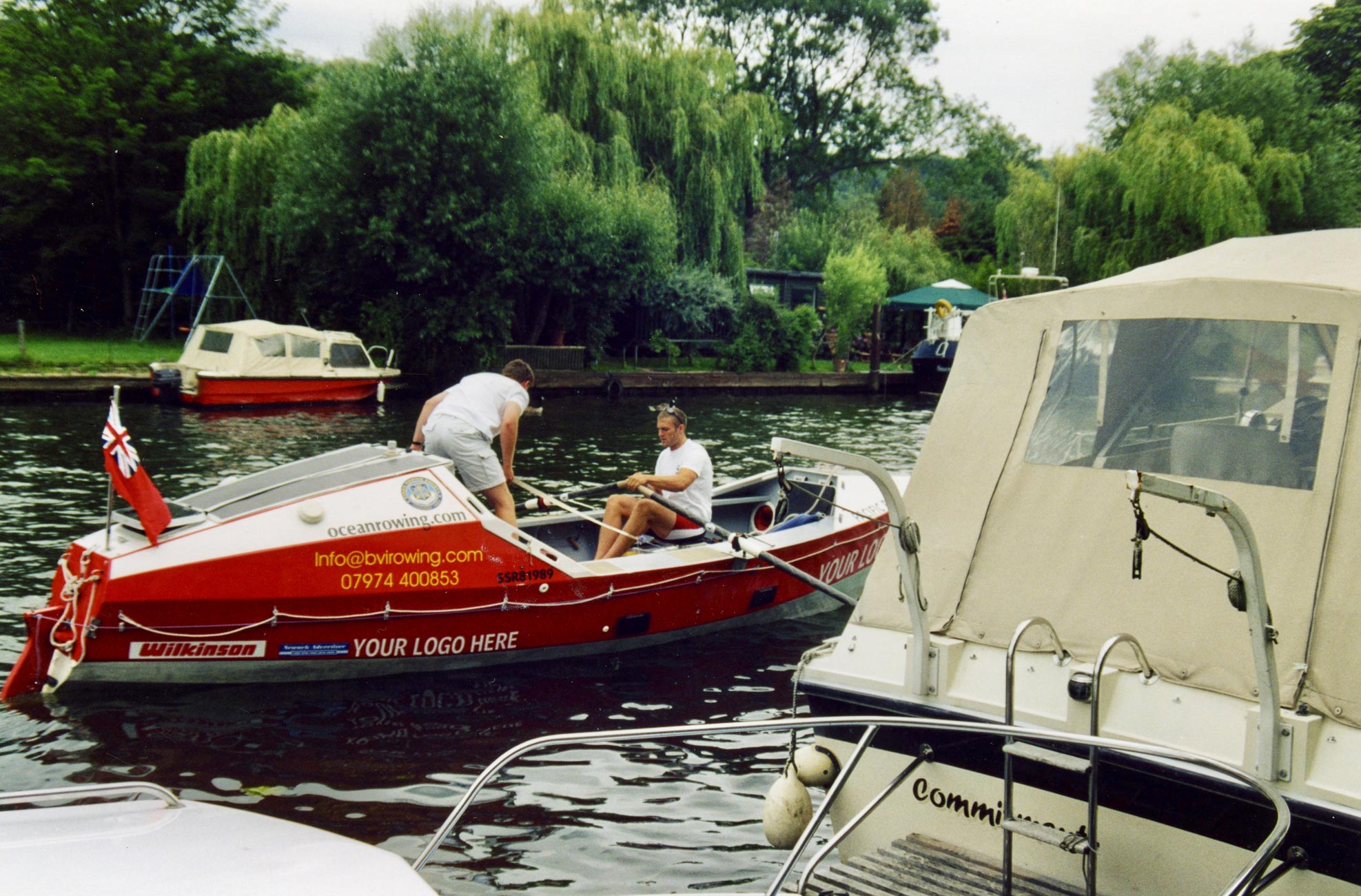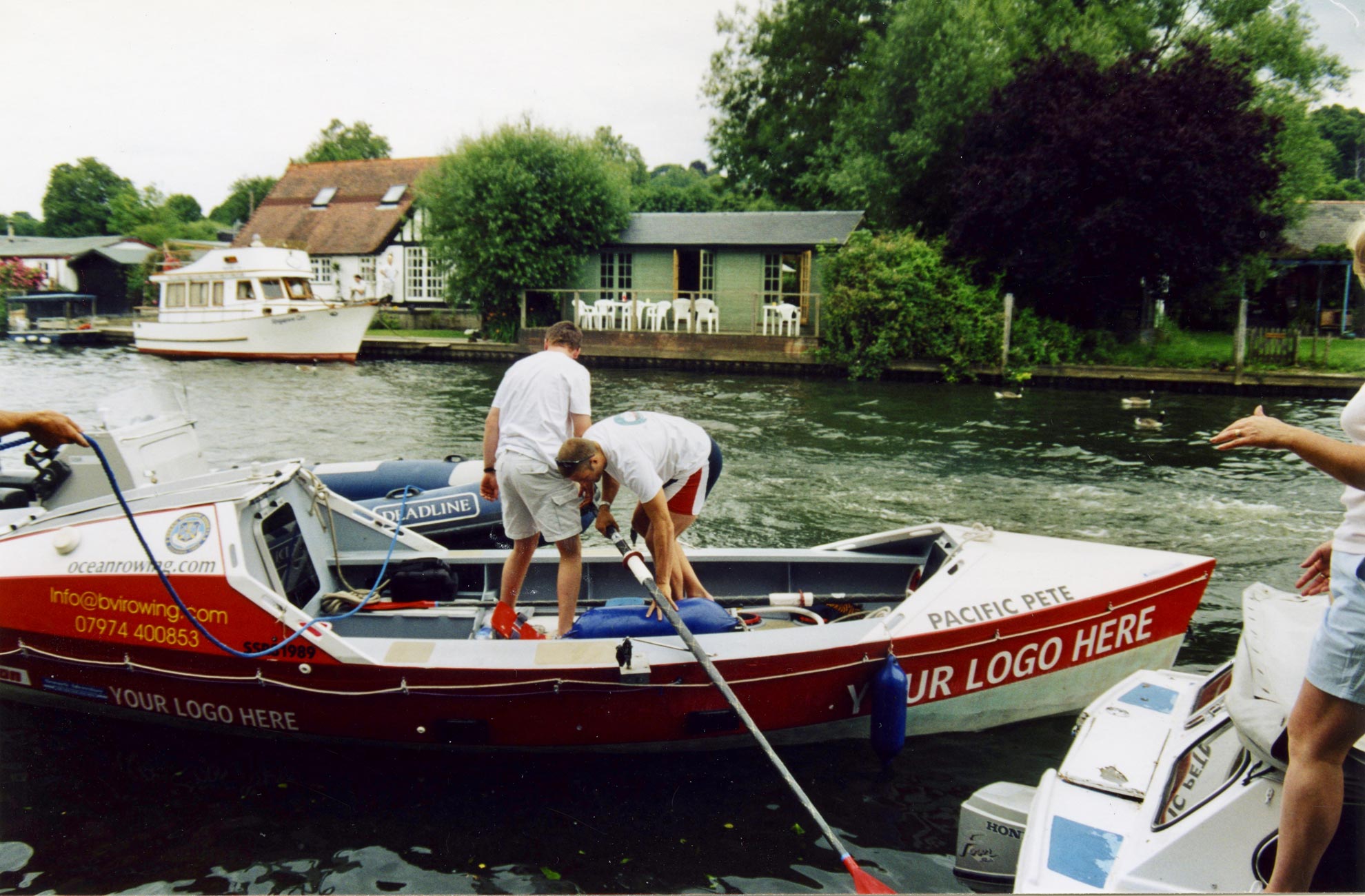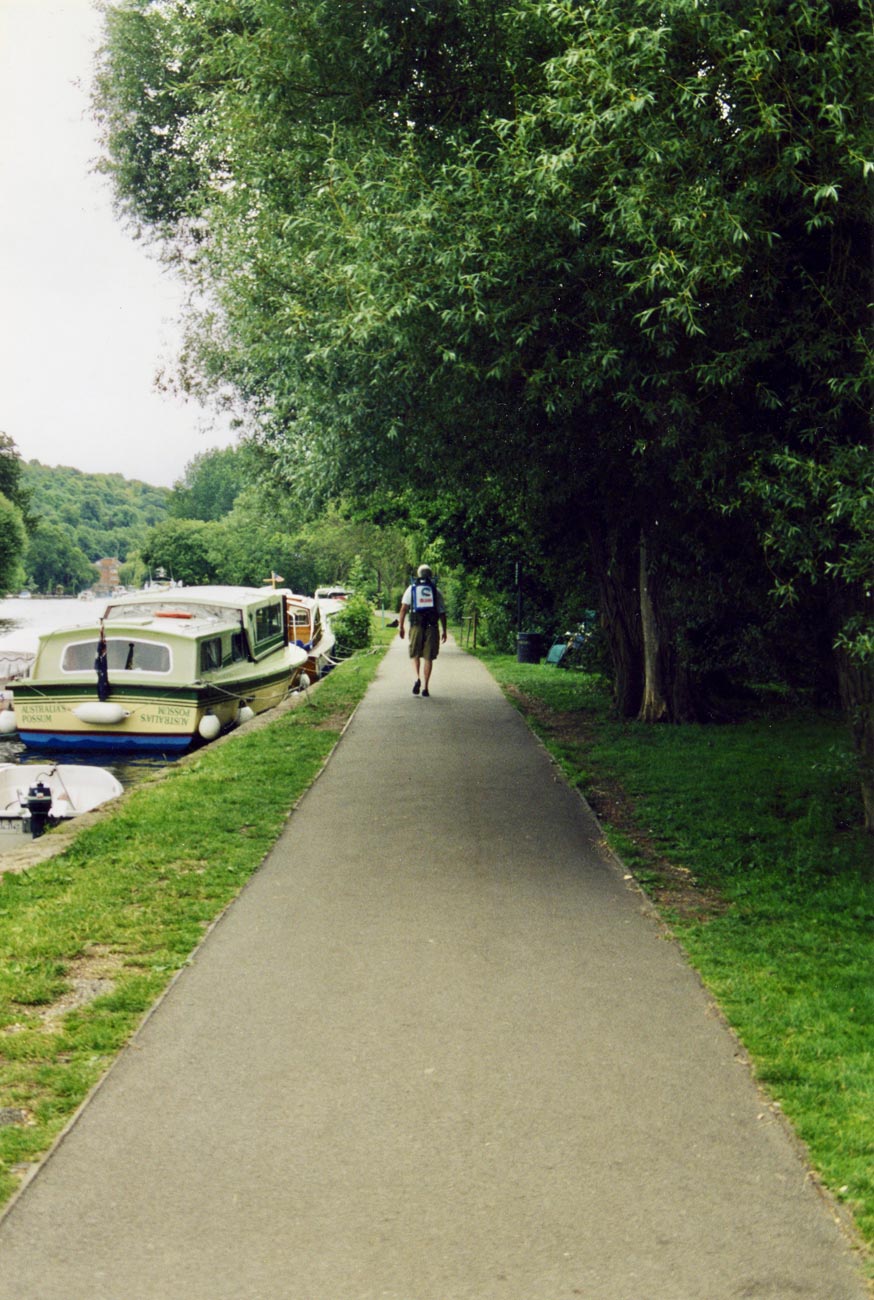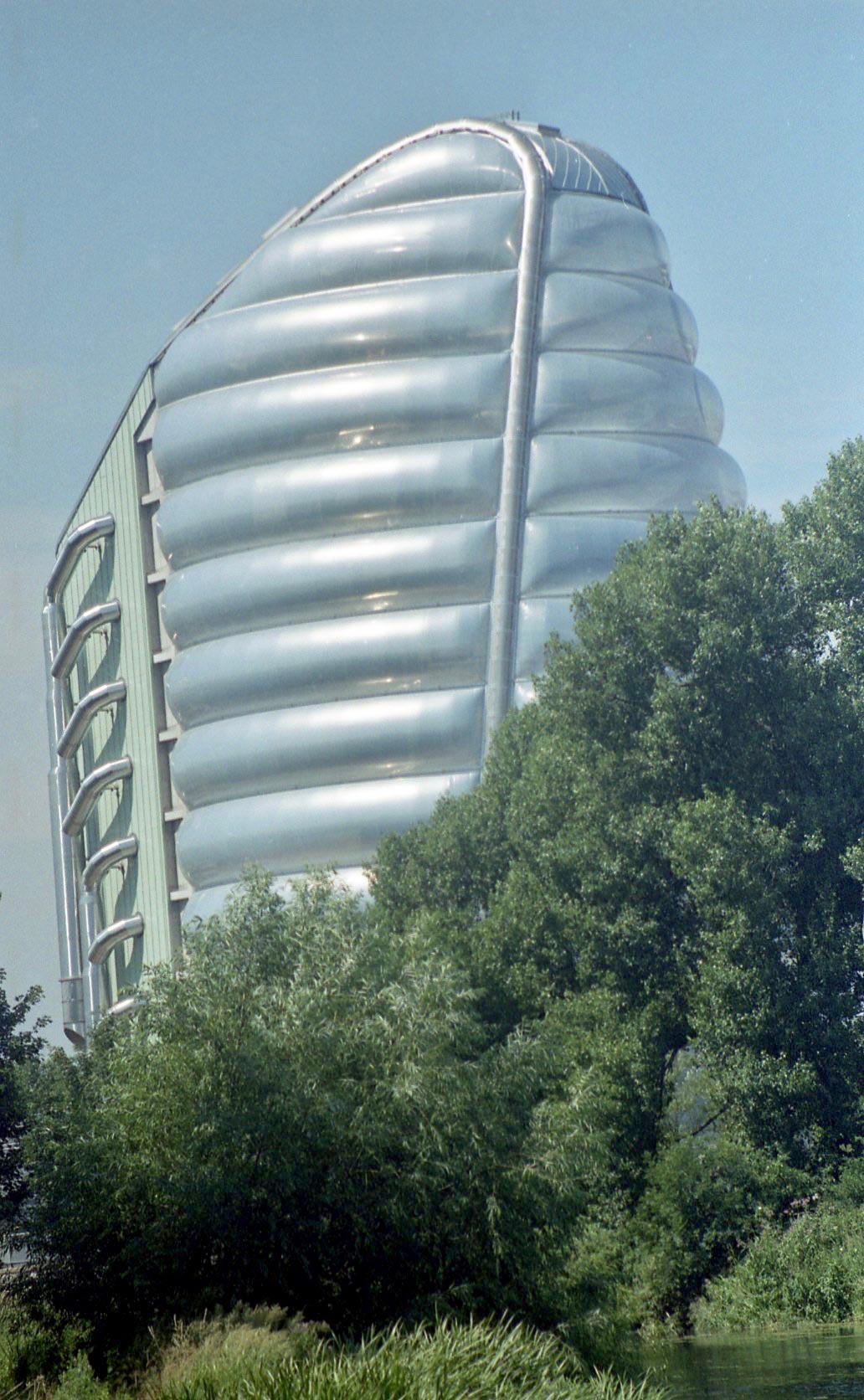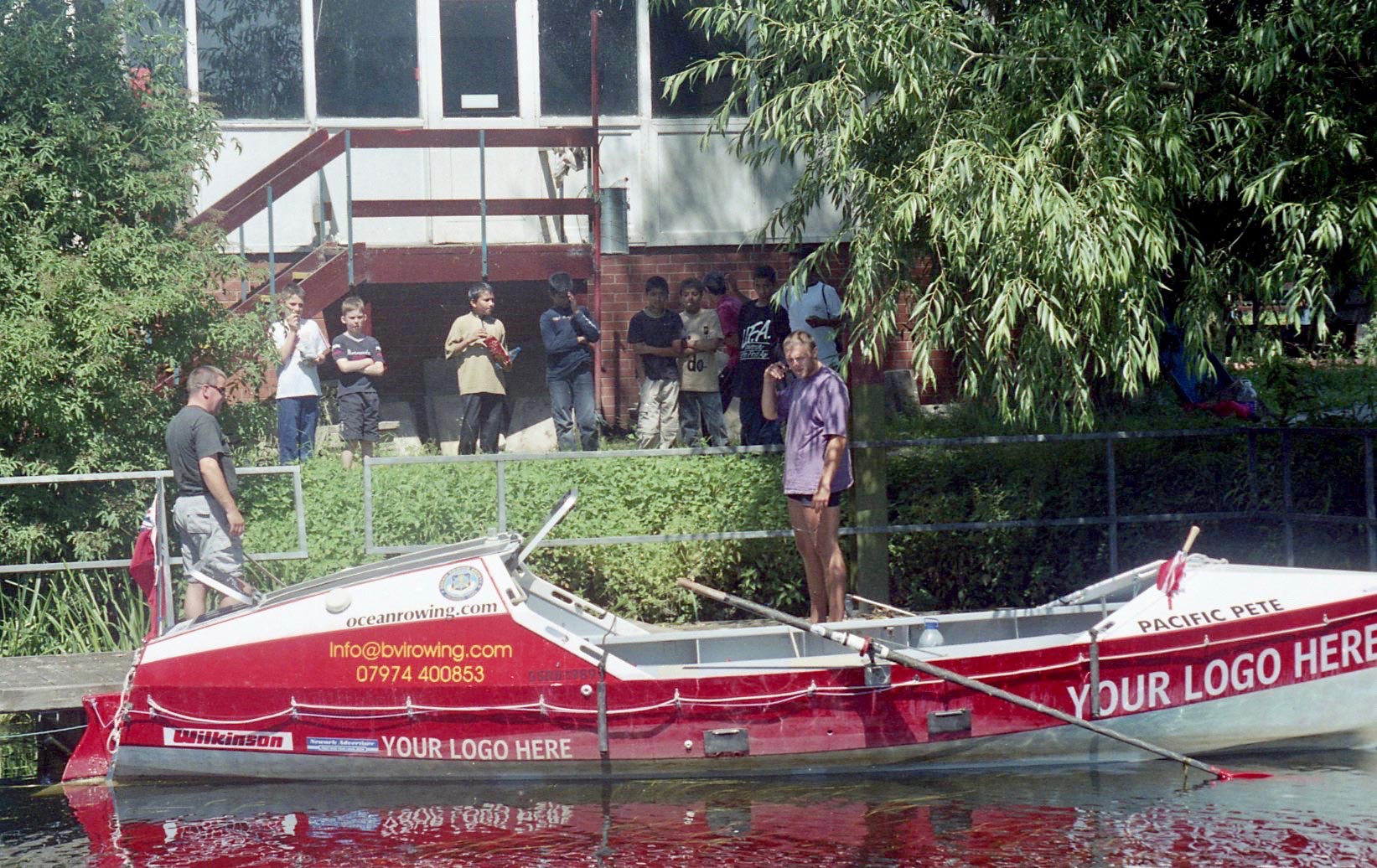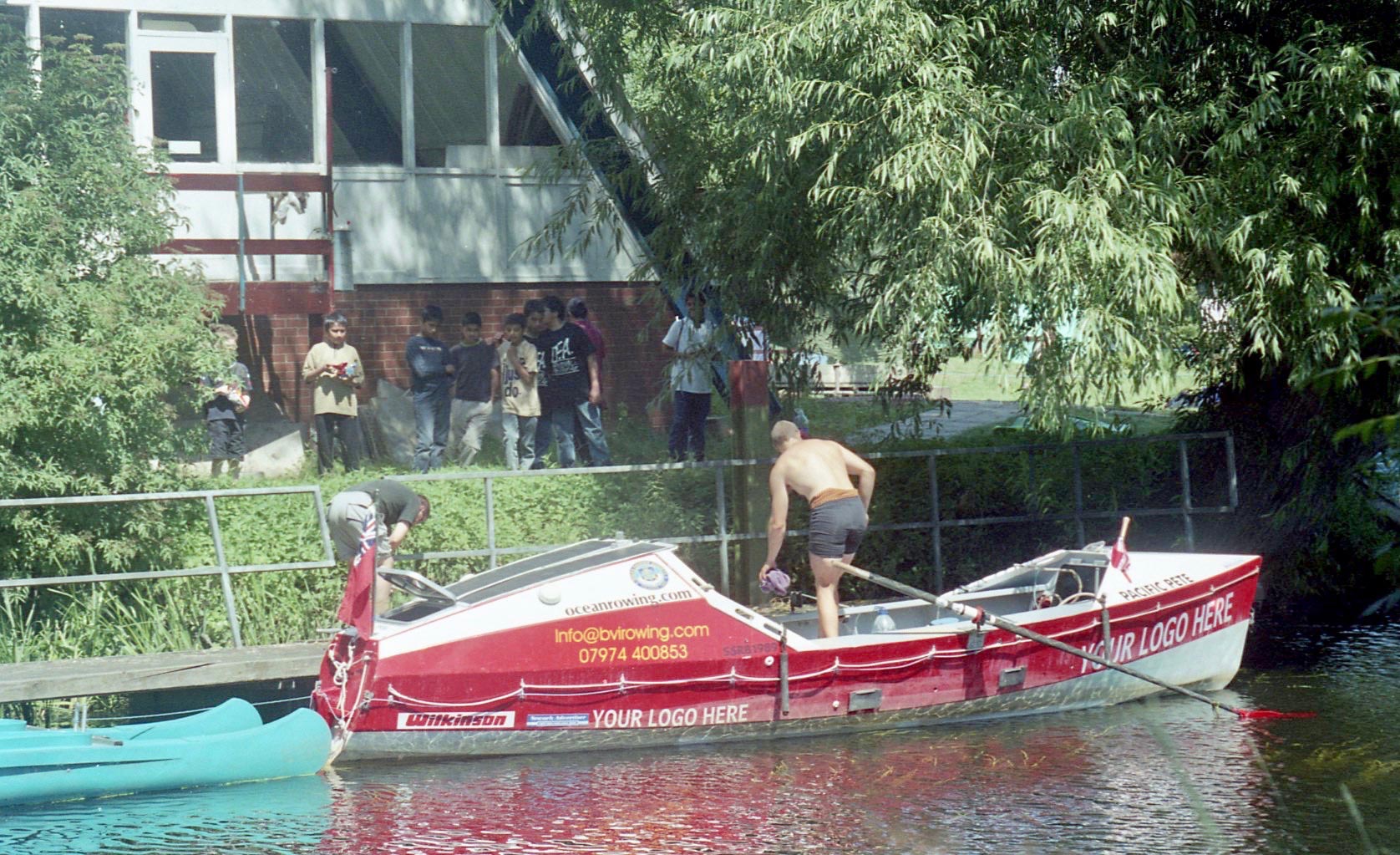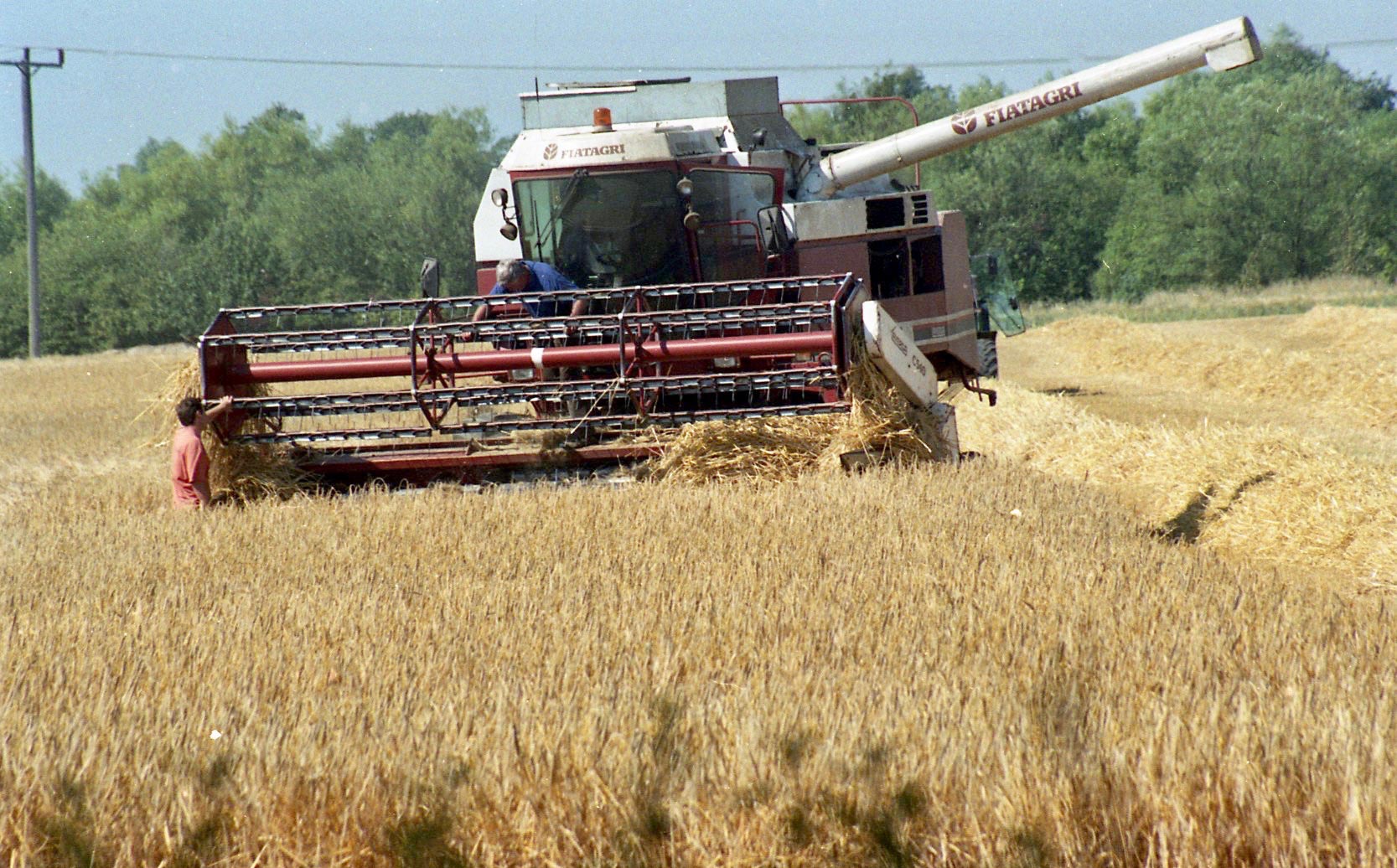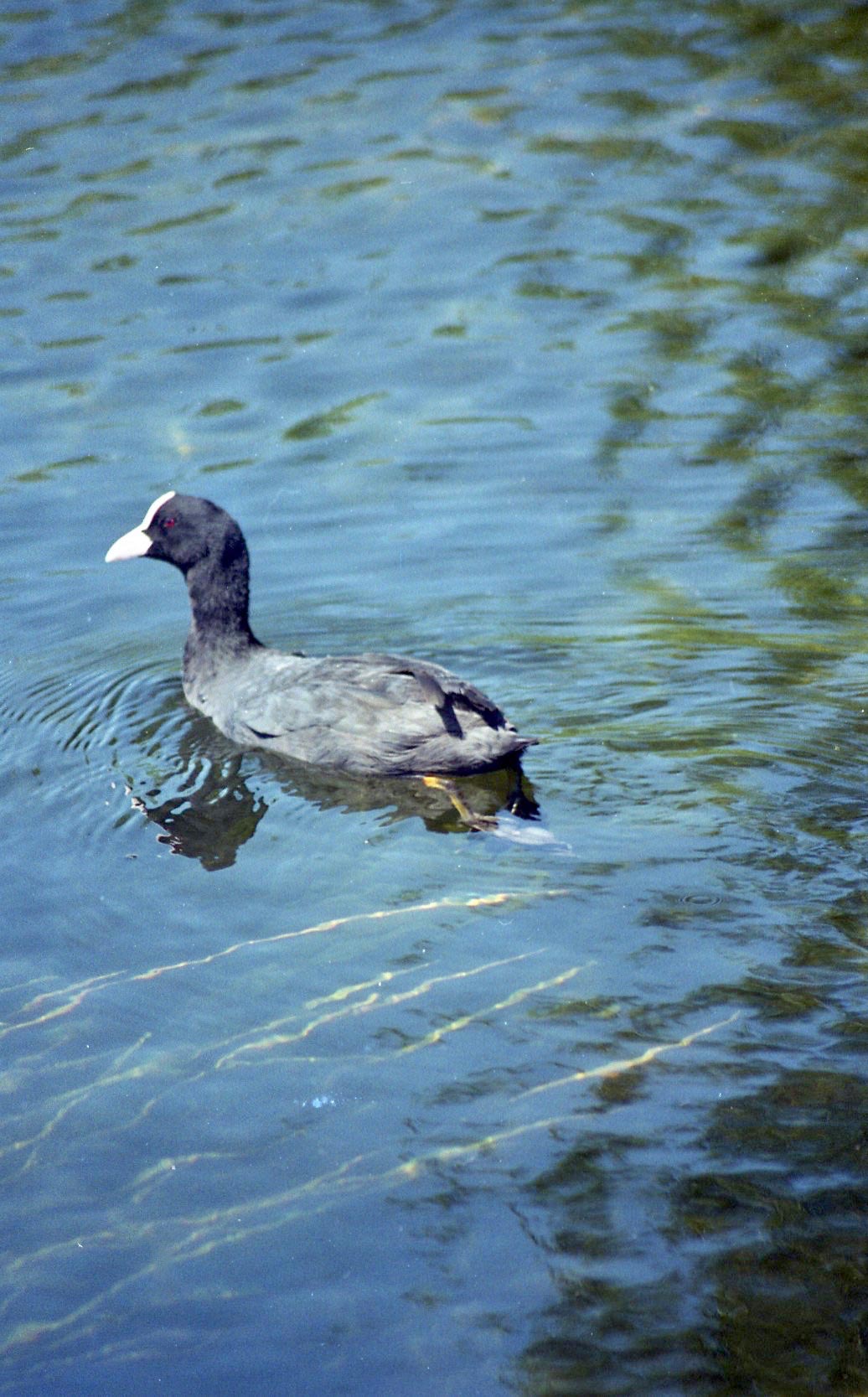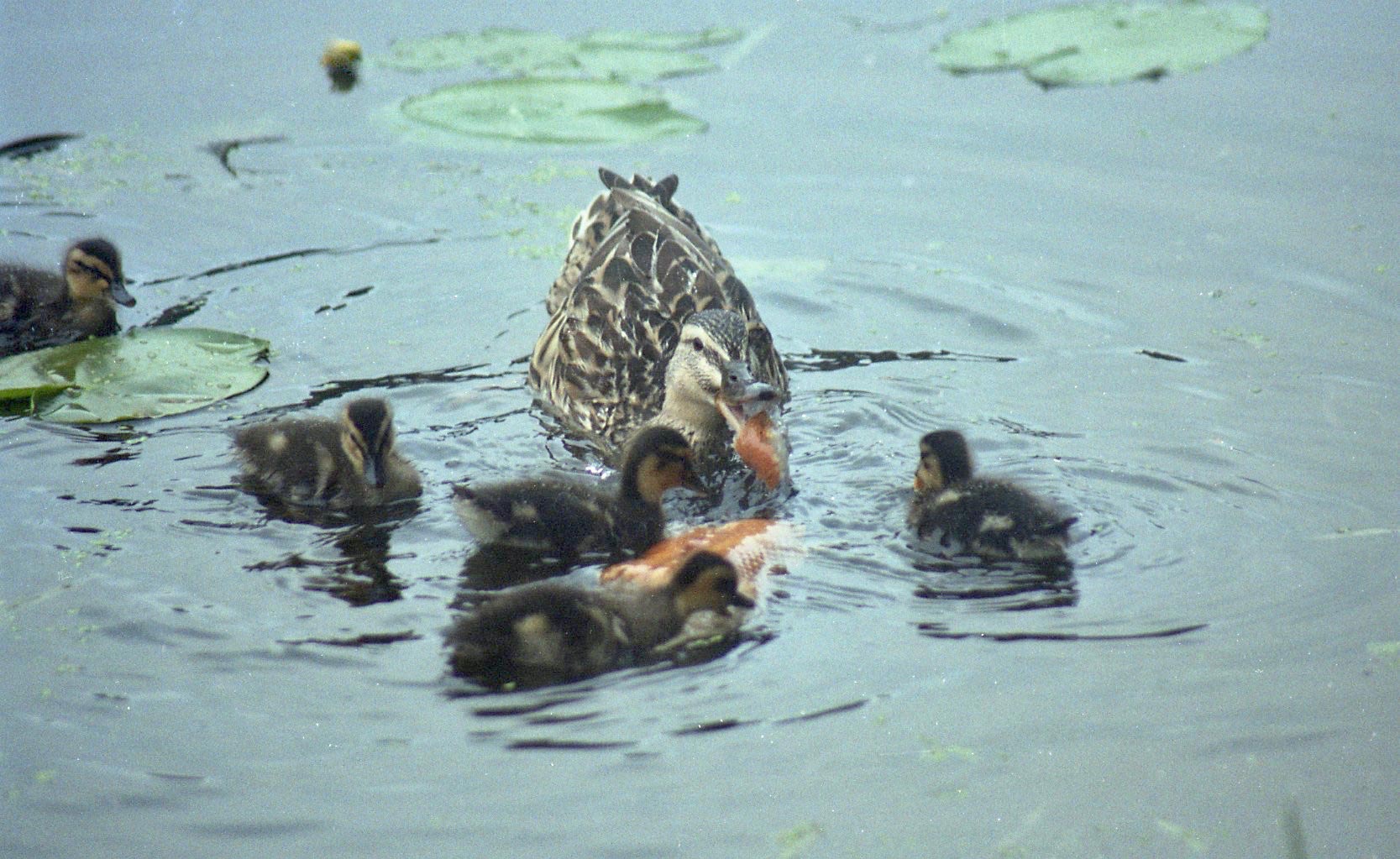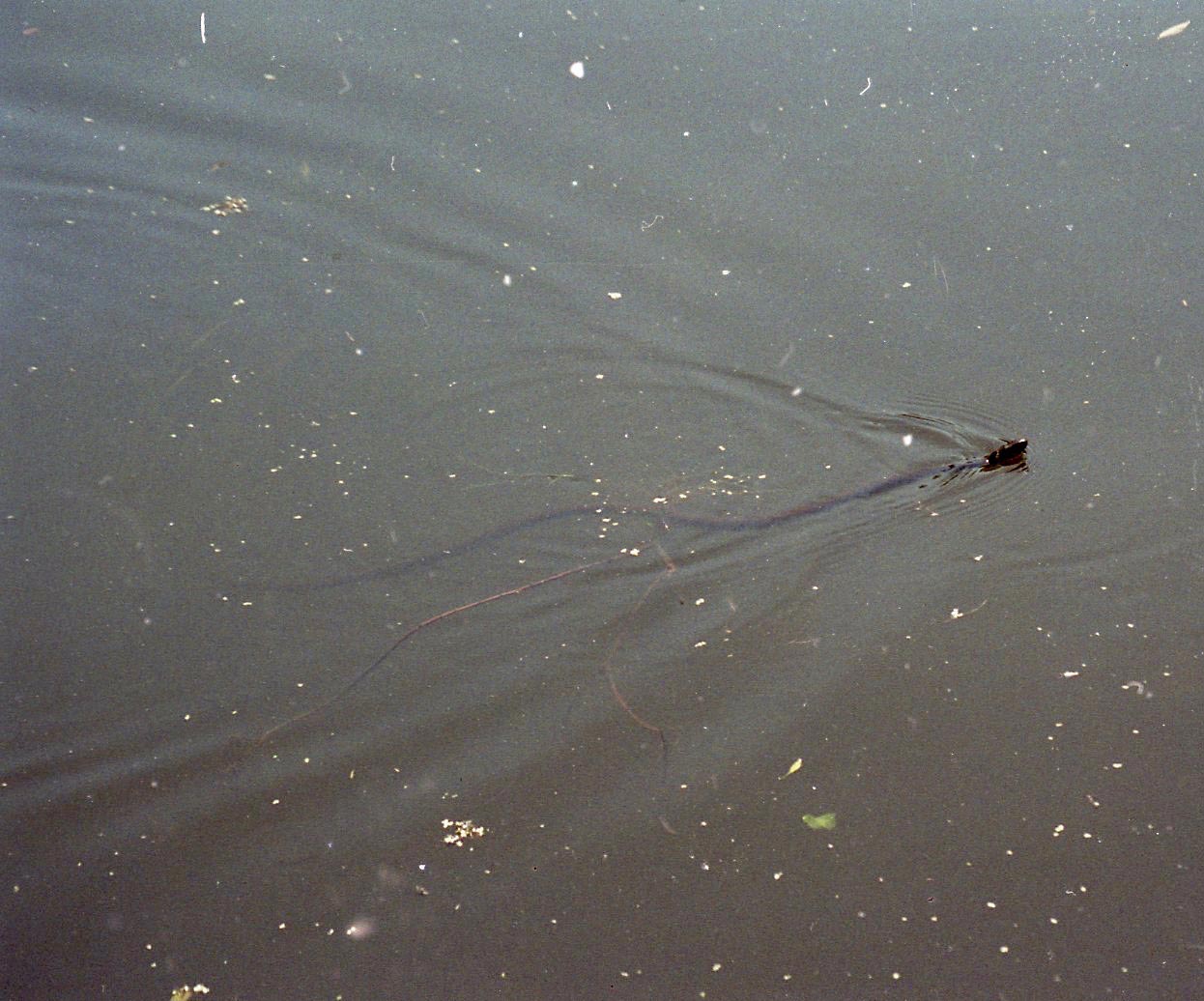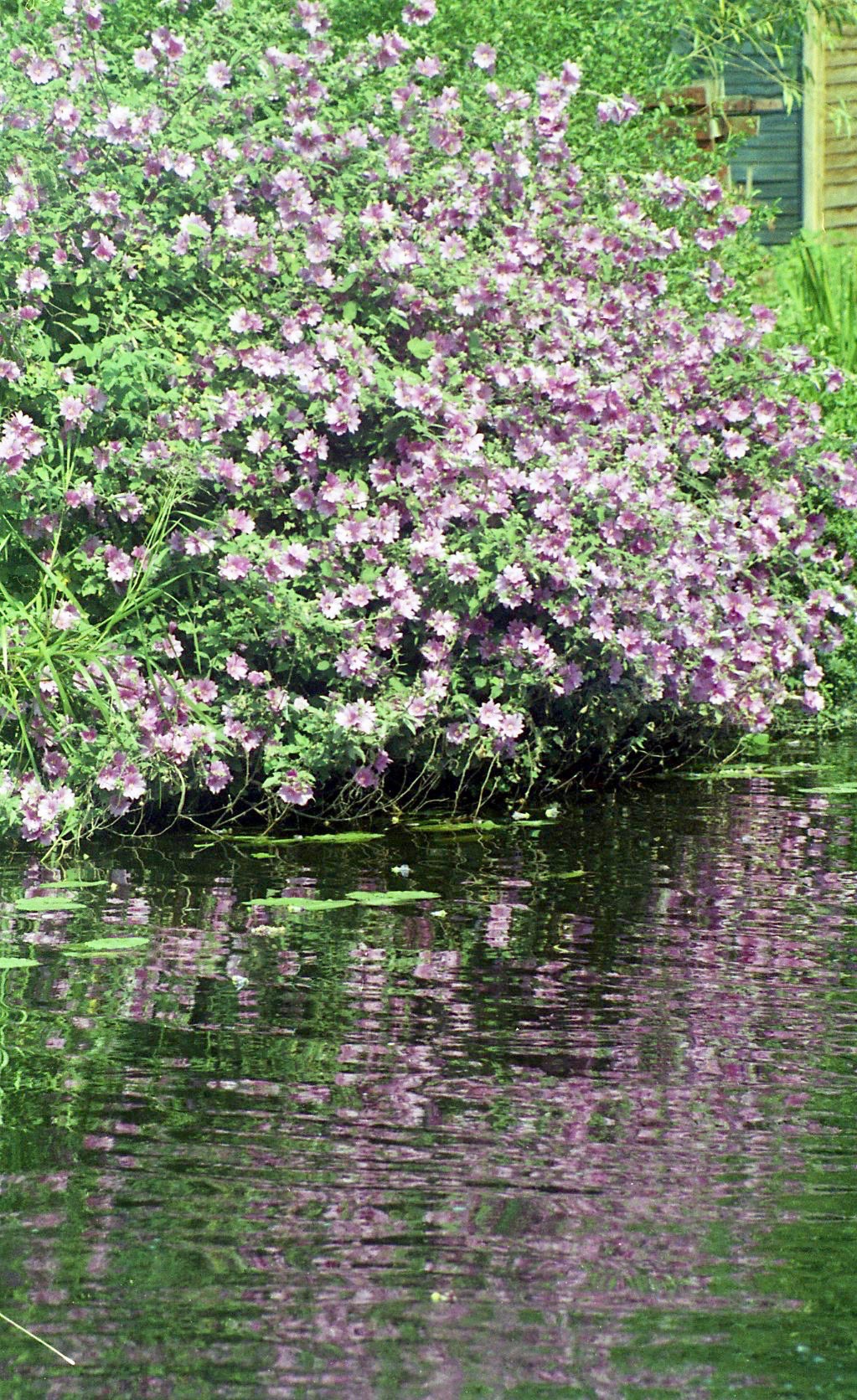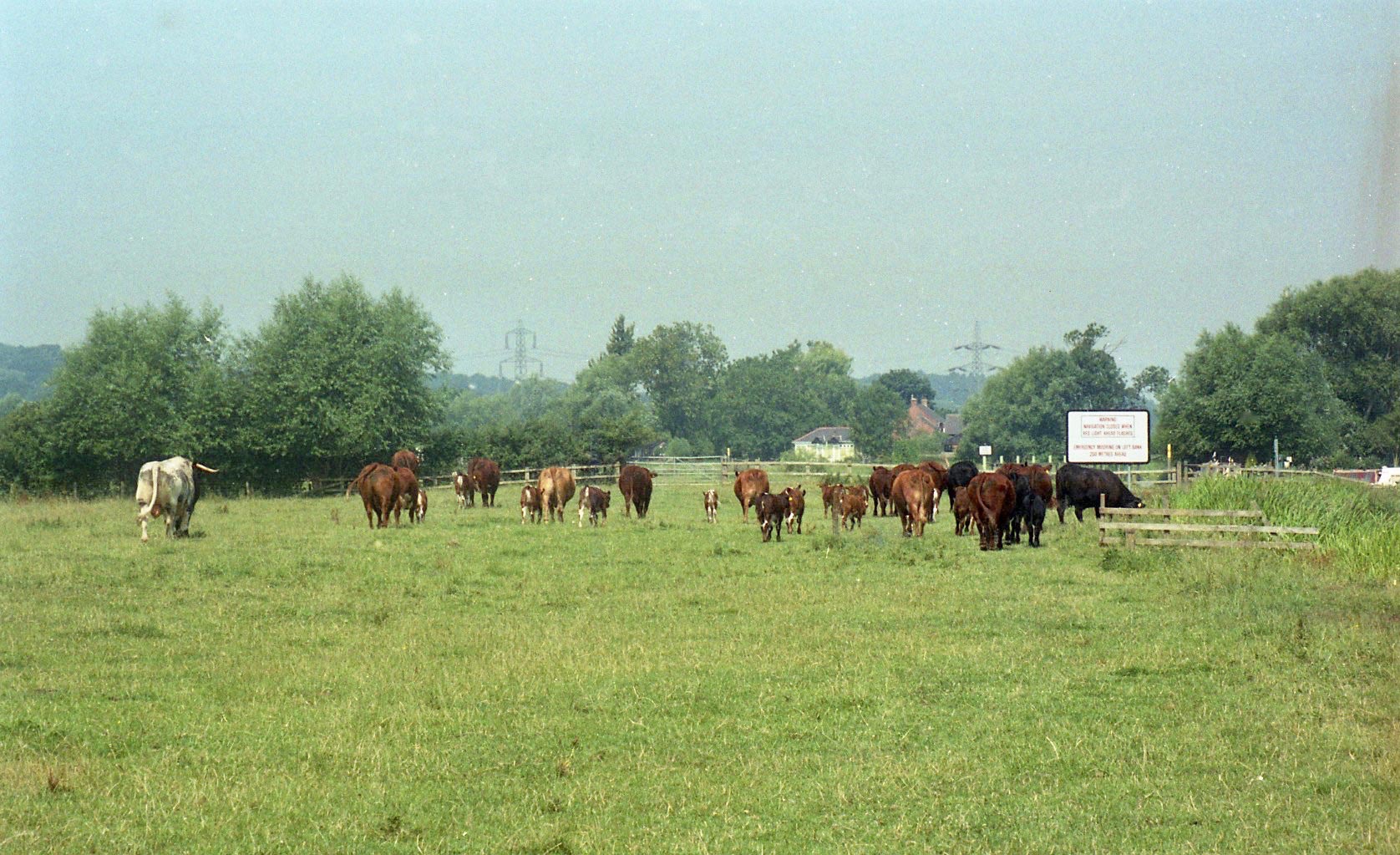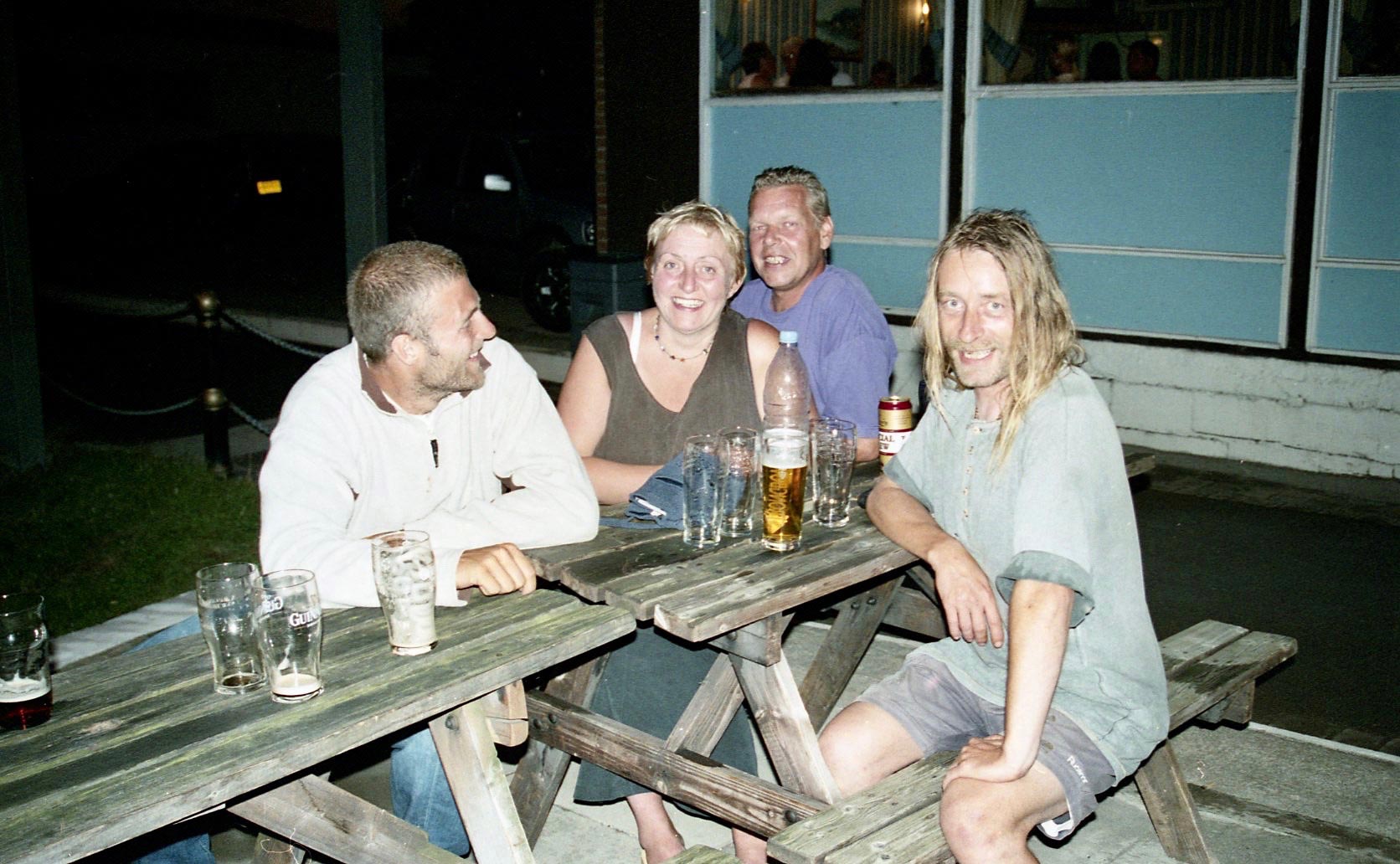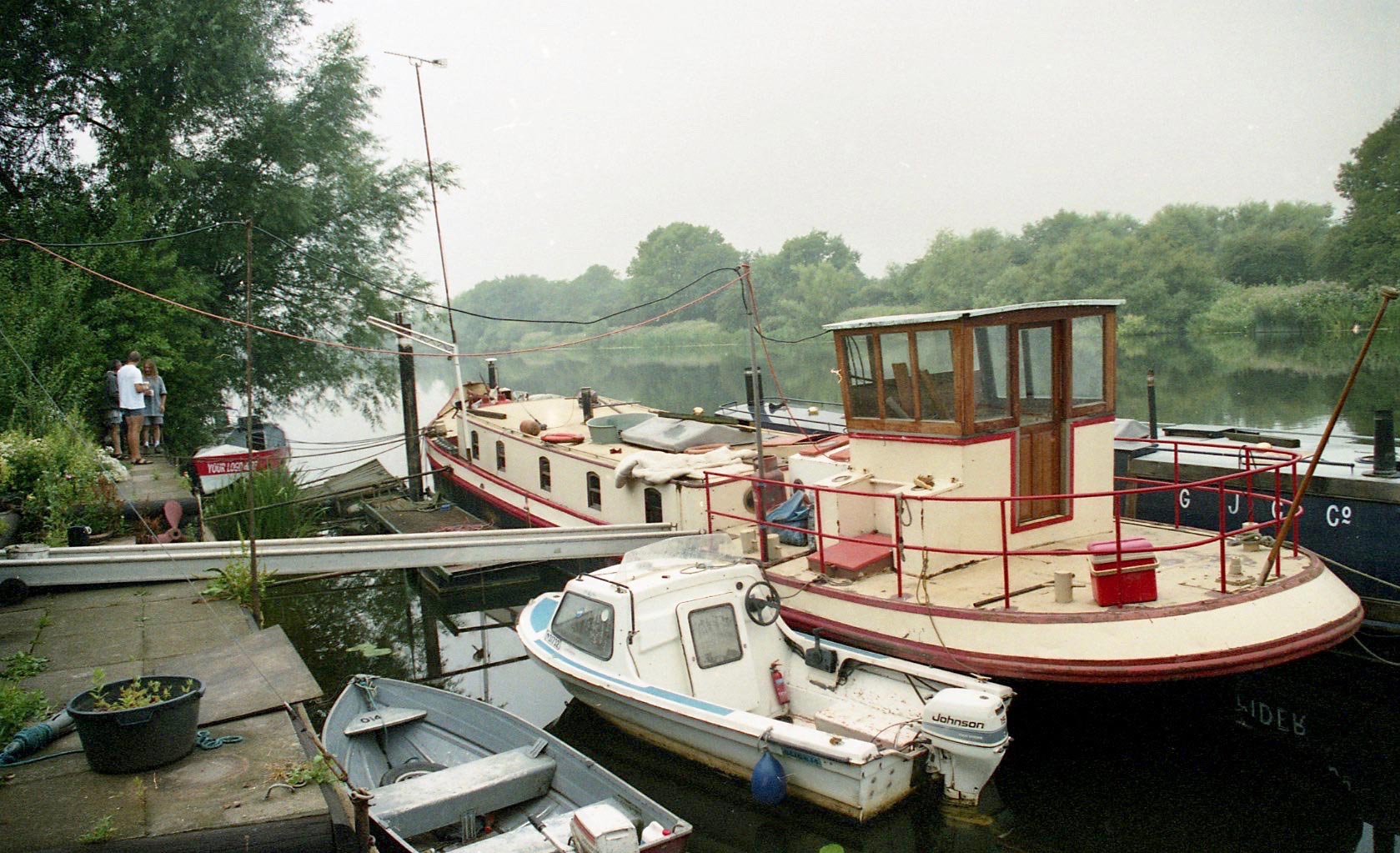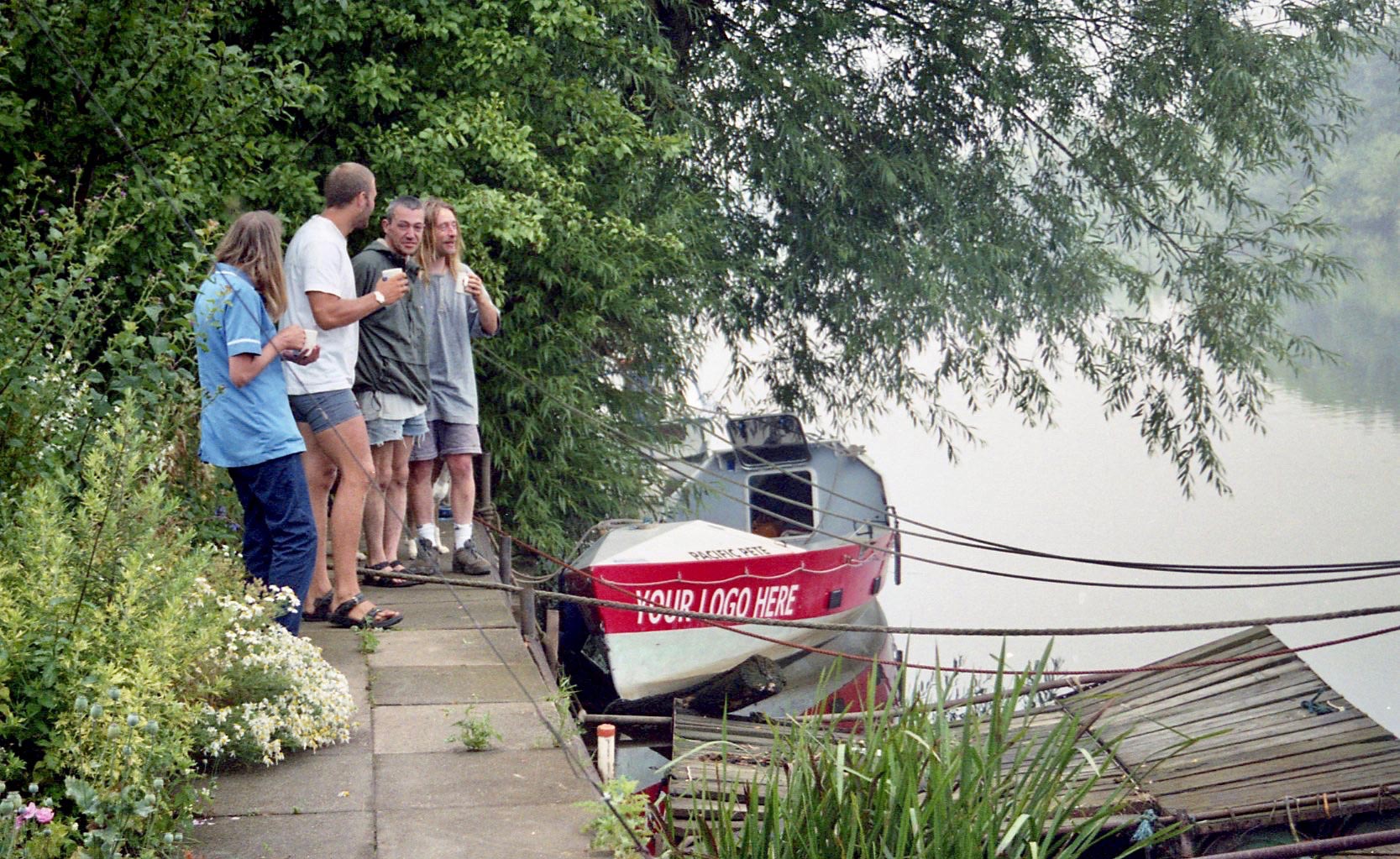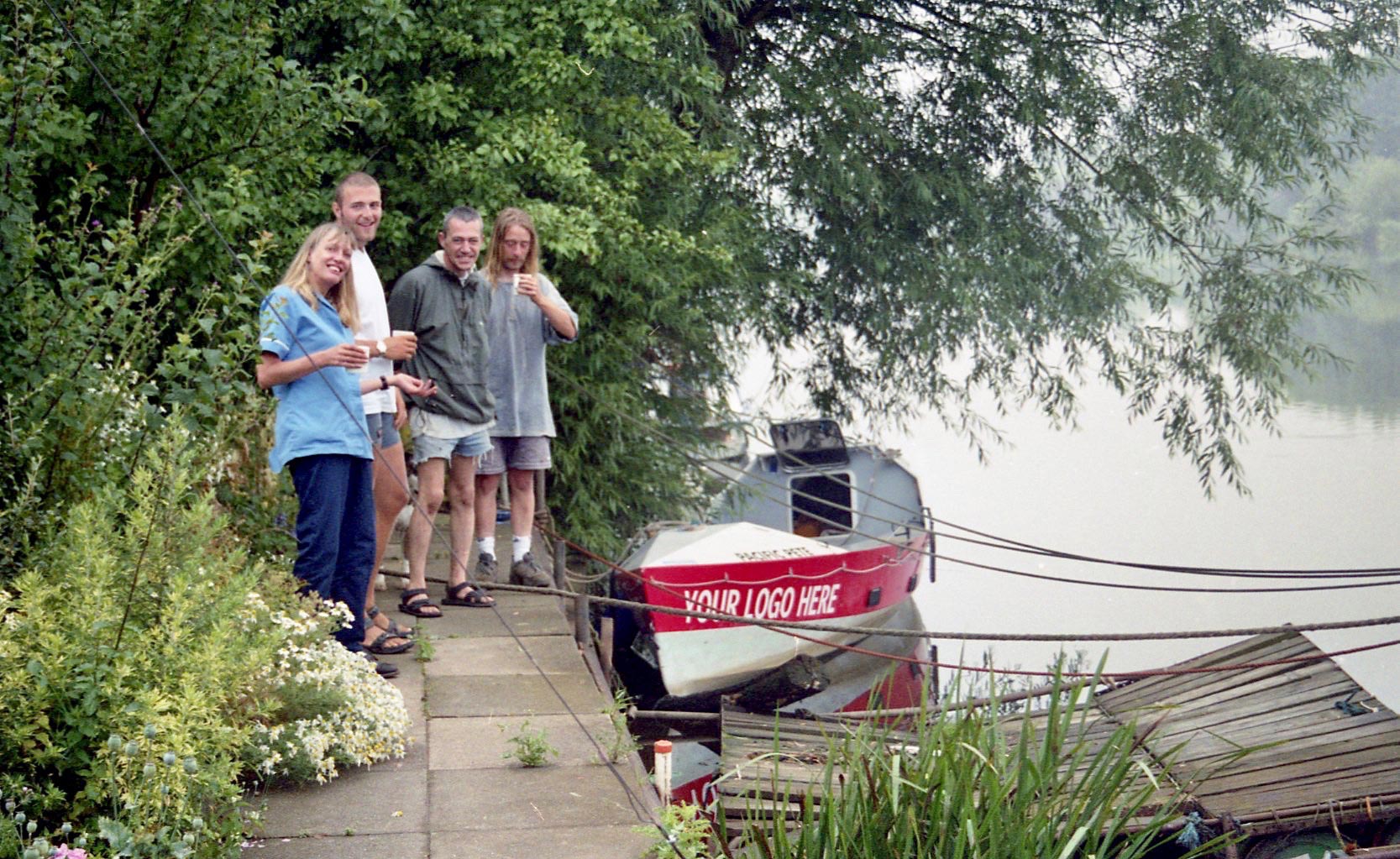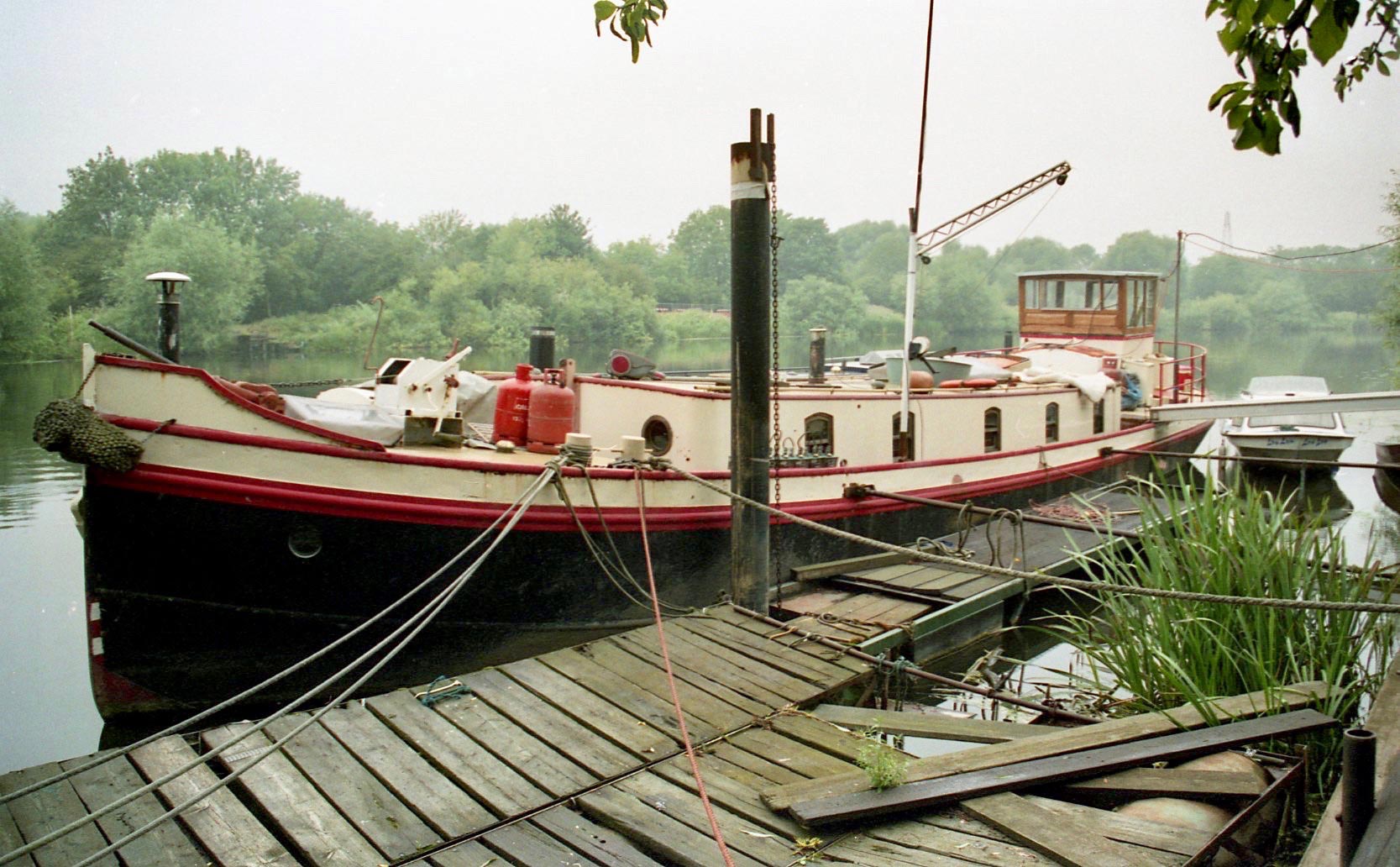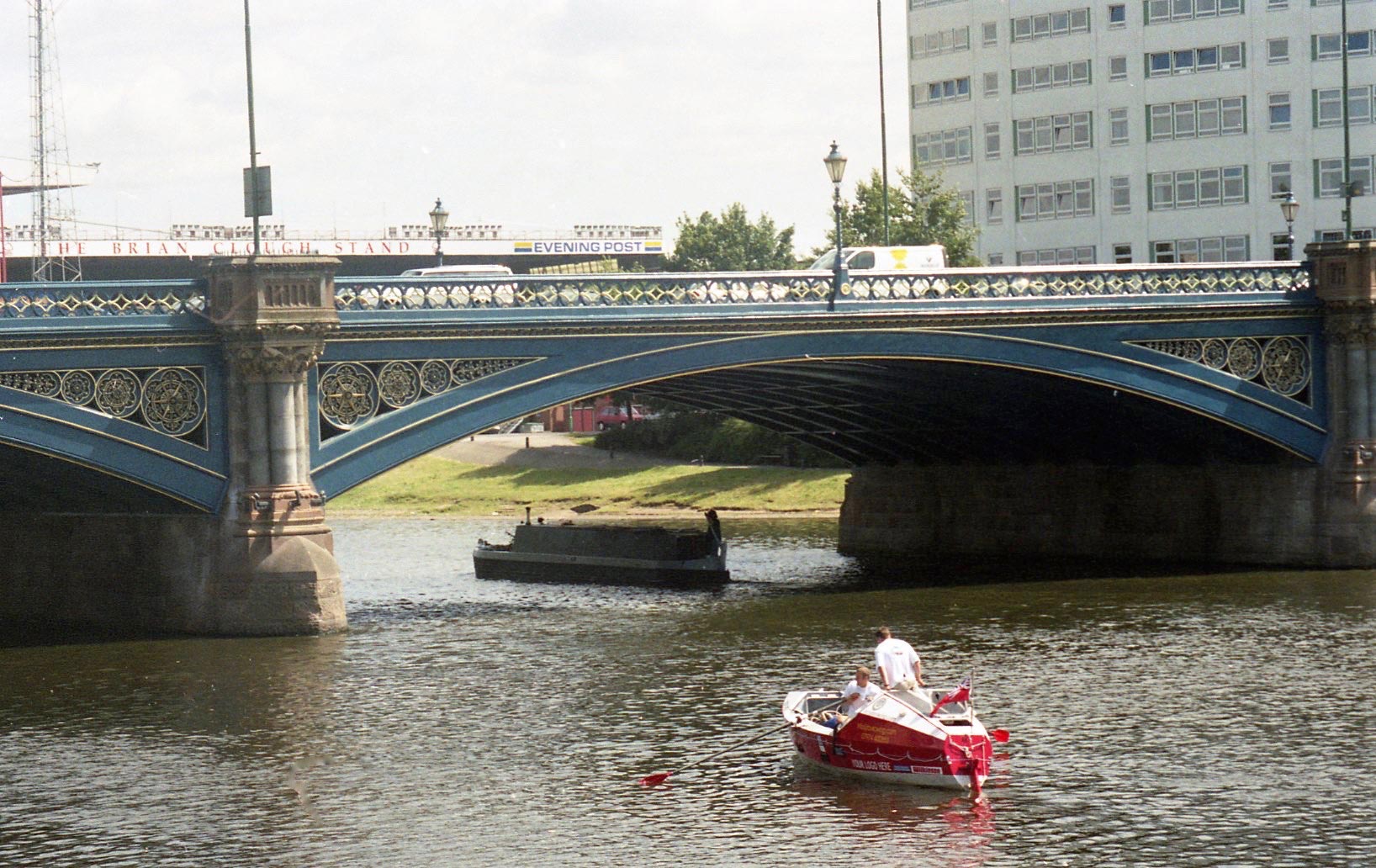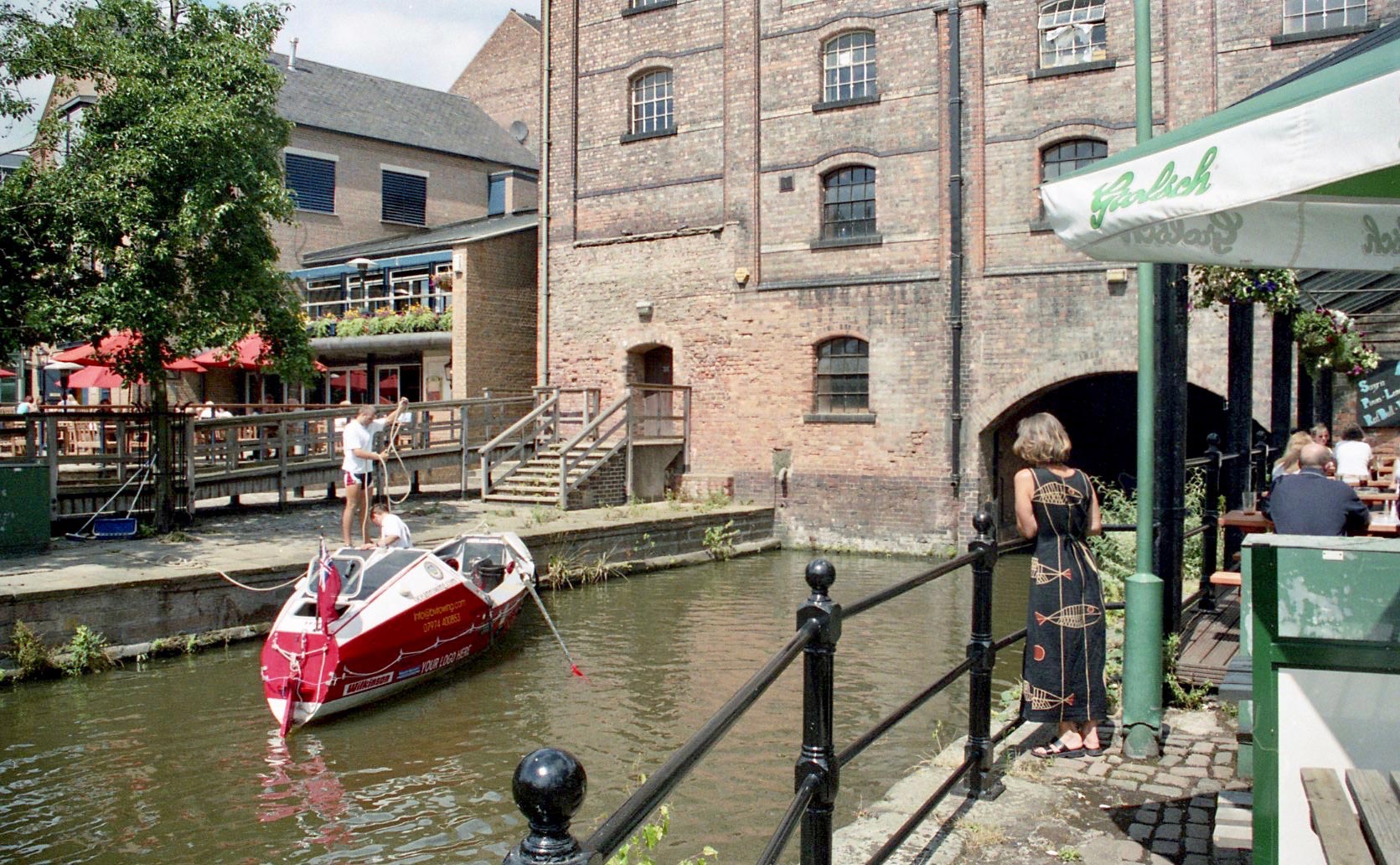One evening we were given a trip from Port St Charles into the Atlantic Ocean.
Flanked by the lowering sun we then encountered Kilcullen towing New Horizons.
Quite why John Peck and Fraser Dodds, who manned the rowing boat New Horizons, needed the attentions of the support boat at this point, I am not sure, for they are given in the statistics of the Ocean Rowing Society as having completed the race. Kilcullen, you see, is one of a group of vessels deputed to be on hand in case of need by rowers in distress. I understand that, because they tended to stay behind the slowest competitors, these yachts would be a good 500 miles away from the leaders.
Very soon after this, we experienced one of the dramatic gold and indigo sunsets that Sam had enjoyed during his 59 days at sea.
By this time the crew of Kilcullen were relaxing in silhouette.
The next morning a cast of crabs danced the side shuffle on the rocks.
Sam, always having been one of the leaders, told us how the waves could toss his little boat considerable distances through the air.
The purpose built rowing boat was designed to keep upright. Provided. That the windows to the small cabin remained closed.
One morning my son was woken by the hailer of a cargo vessel asking whether he needed assistance. He informed them that he had no need of it. Off they sailed.
Then, out of the blue, the ship turned and sped back towards Pacific Pete.
Just imagine the bow wave. This didn’t send Sam’s boat any distance. Instead it sent it in a circular spin in which it rolled over twice.
Had the windows been open Sam and his boat would have joined his camera on the bed of the ocean into which it had slipped. He didn’t mention this on one of his weekly telephone calls to me.
